The Beatles Anthology Timeline
Excerpts from The Beatles Anthology Book.
Available here.
1960-1962
HAMBURG
GERMANY
"When you look back on it, you realise how good things were, even though at the time you might have thought, ‘Gor, we’ve got to play six hours a night and all we get is two dollars and you’ve got to take these pills to keep awake, man; it’s not right.’" John
"We ended up in Hamburg very late one night. We got the timing wrong; there was no one there to meet us. We could find Hamburg from the map but then we had to find the St Pauli district, and then the Reeperbahn. By the time we found the street and the club it was all closed. There we were, with no hotel or anything, and it was now bedtime." Paul
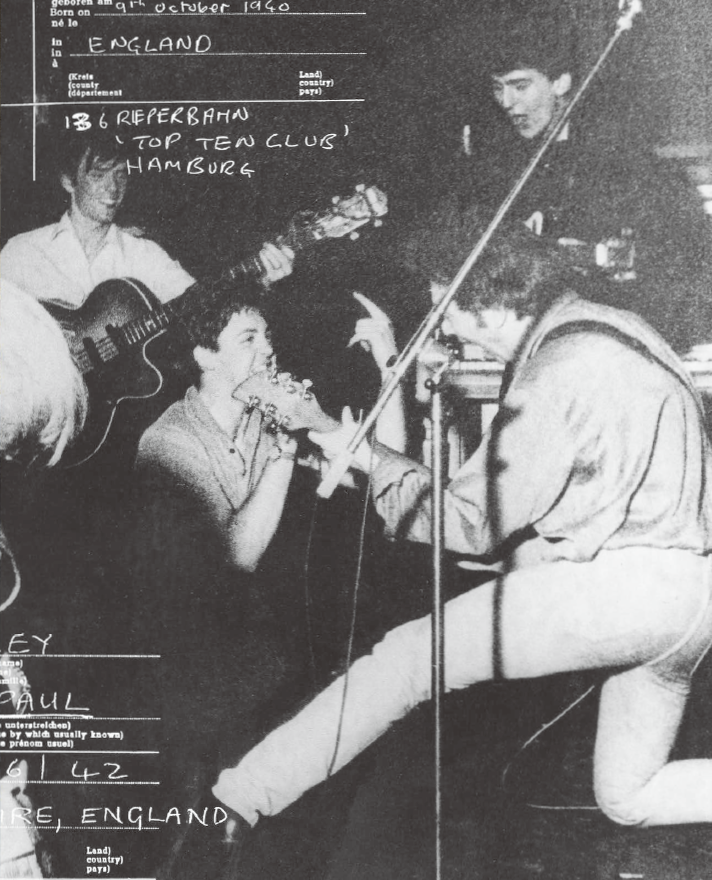
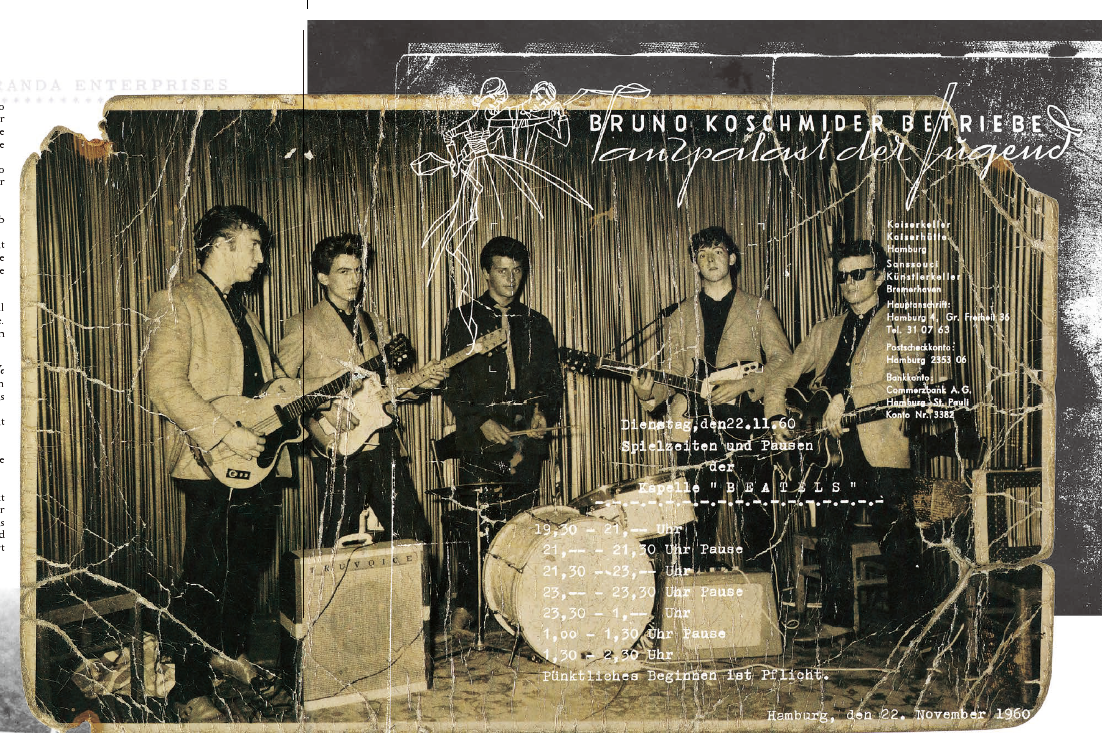
"This was taken when we first played at the Indra. I remember the outfits: a neighbour of Paul’s made these lilac jackets and after a few weeks at the Indra they melted, just dropped apart." George
"It was Hamburg that did it. That’s where we really developed. To get the Germans going and keep it up for twelve hours at a time we really had to hammer. We would never have developed as much if we’d stayed at home. We had to try anything that came into our heads in Hamburg. There was nobody to copy from. We played what we liked best and the Germans liked it as long as it was loud." John
"We were now playing better places. We would still do our rock act, though we wouldn’t get decent money for any gig apart from cabaret. I could pull out ‘Till There Was You’ or ‘A Taste Of Honey’ – the more cabaret things – and John would sing ‘Over The Rainbow’ and ‘Ain’t She Sweet’." Paul
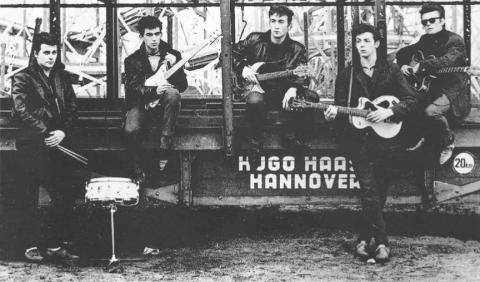
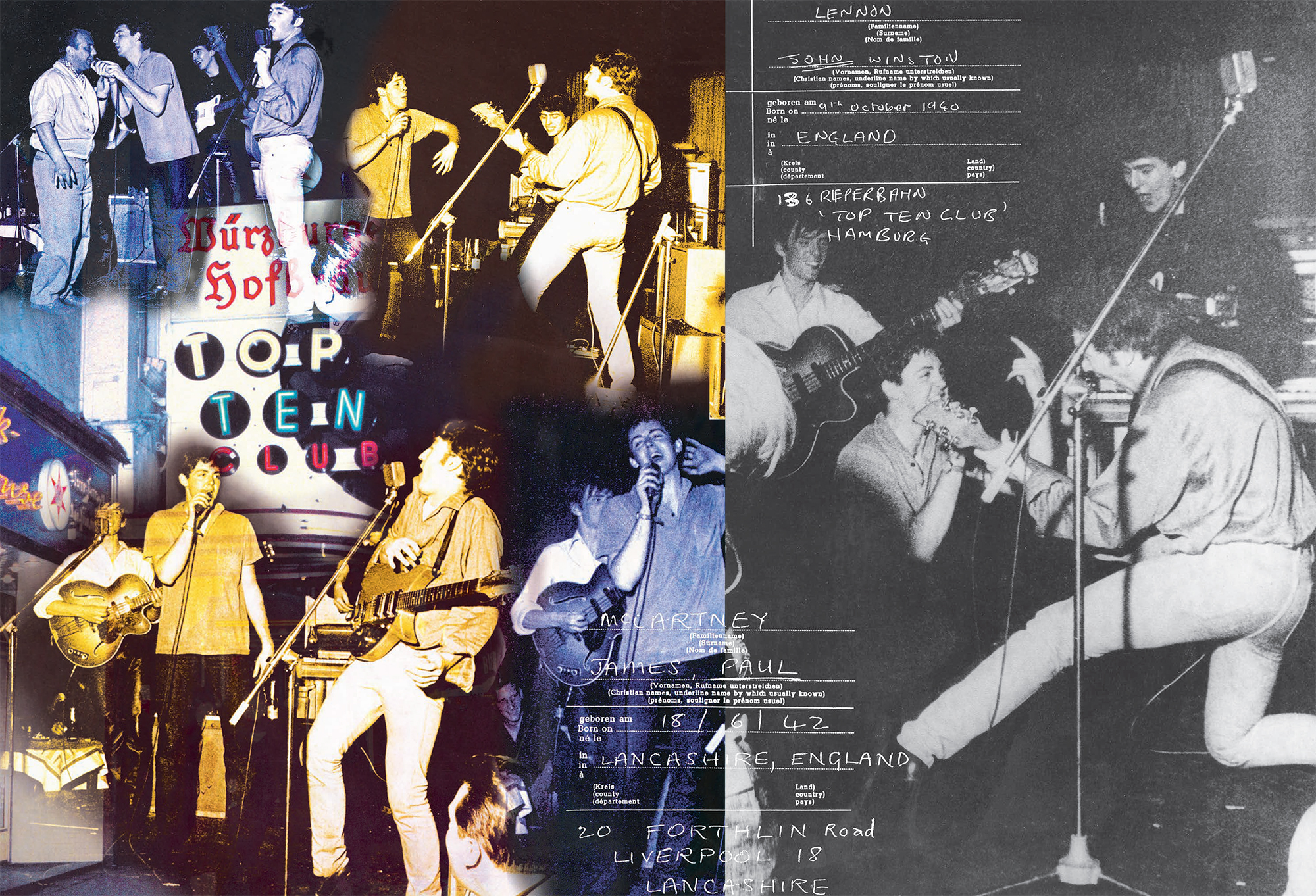
During The Beatles’ second visit to Hamburg, April to July 1961, the group regularly backed an English singer/guitarist, Tony Sheridan, who had gone to play there in the early summer of 1960 and befriended The Beatles when they first arrived in the city shortly afterwards. On a visit to the Top Ten Club, a music publishing executive was impressed by the Sheridan/Beatles stage combination and so talked to a friend, the orchestra leader and composer Bert Kaempfert, suggesting that Kaempfert consider producing some recording sessions.
One morning, probably 22 June, not long after The Beatles had finished another seven-hour slog in the Top Ten, taxis arrived to take them to the place of recording – not a real studio but Friedrich-Ebert-Halle, a school, where the session took place on stage. The Beatles backed Sheridan on five or six numbers – the main one being a rock rendition of the lullaby My Bonnie Lies Over The Ocean – and then had two more to themselves: Ain’t She Sweet and Cry For A Shadow.
In August 1961, after The Beatles had returned to Liverpool, Polydor issued My Bonnie as a single, credited to Tony Sheridan and the Beat Brothers, the disc eventually climbing high on a local German chart. Only on the British release (elsewhere, it was only after the group became famous) was the label credit altered to Tony Sheridan and The Beatles.
But My Bonnie was more than just The Beatles’ first appearance on commercial disc: it also brought them to the attention of Brian Epstein…
Tony Sheridan rocked-up the arrangement they called My Bonnie, delivered the spoken-word introduction, sang and played lead guitar. George Harrison played the opening lead guitar passage, Paul McCartney is clearly evident, not only for his bass but also for his background shouts, and John Lennon and drummer Pete Best – who had joined the group’s line-up in August 1960 – also played.
When it came to Hamburg audiences, and this recording, The Beatles delivered the song in what John Lennon later described as “a harder version … more like a march”.
LIVERPOOL AND THE CAVERN
"I loved the Cavern. It was a claustrophobic hell, but it was a great one." Paul
"It was everybody’s idea to wear leather as soon as we saw it. Leather jackets were always the thing – Marlon Brando – and jeans. In Germany they had great leather, and our friends wore it. Astrid was dressing like that when we were still just Liverpool scruffs. She was the one who had the leather kecks and the Beatle haircut. " George
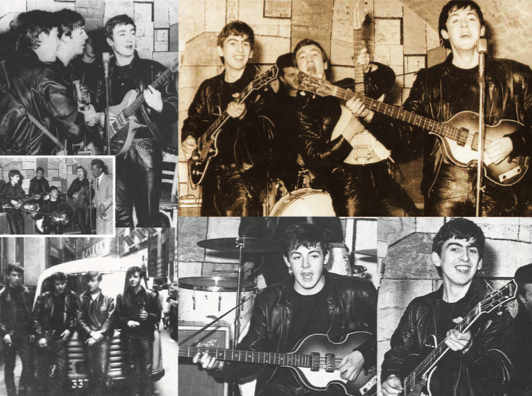


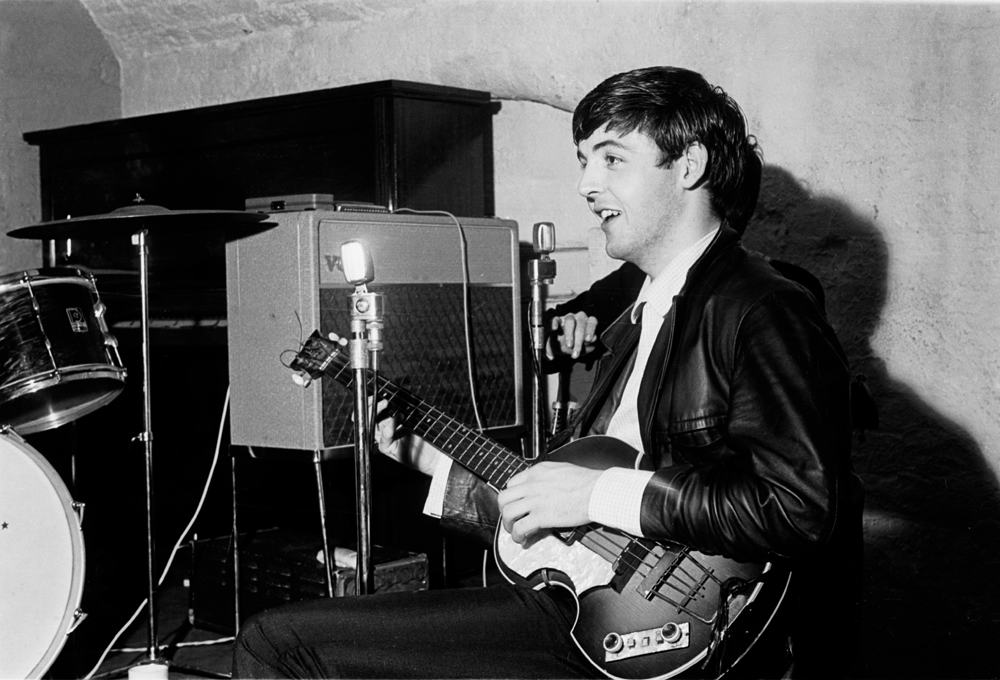
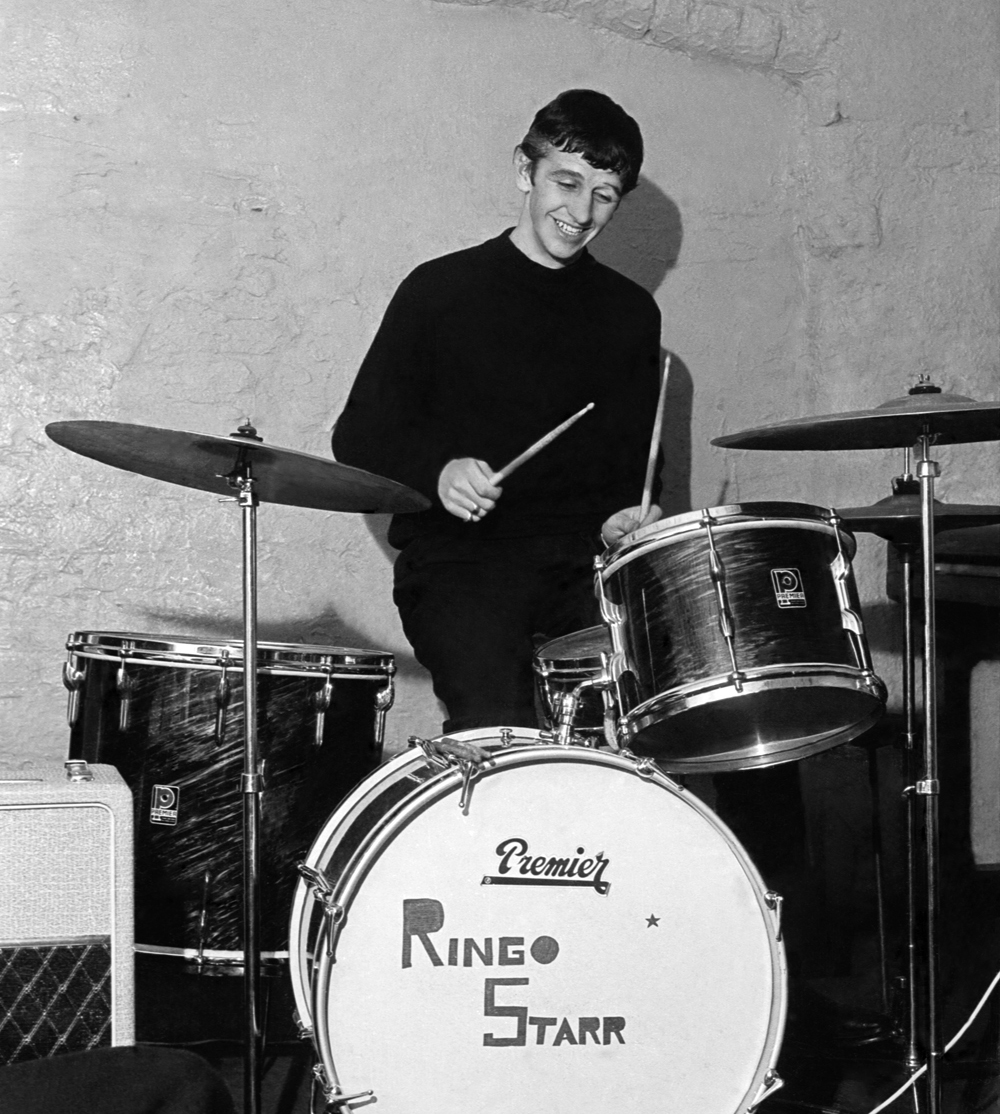


RINGO JOINS THE BAND
"To me it was apparent: Pete kept being sick and not showing up for gigs so we would get Ringo to sit in with the band instead, and every time Ringo sat in, it seemed like ‘this is it’. Eventually we realised, ‘We should get Ringo in the band full time.’" George
ABBEY ROAD STUDIOS
LONDON
"Brian put us in neat suits and shirts and Paul was right behind him. My little rebellion was to have my tie loose, with the top button of my shirt undone, but Paul’d come up to me and put it straight." John
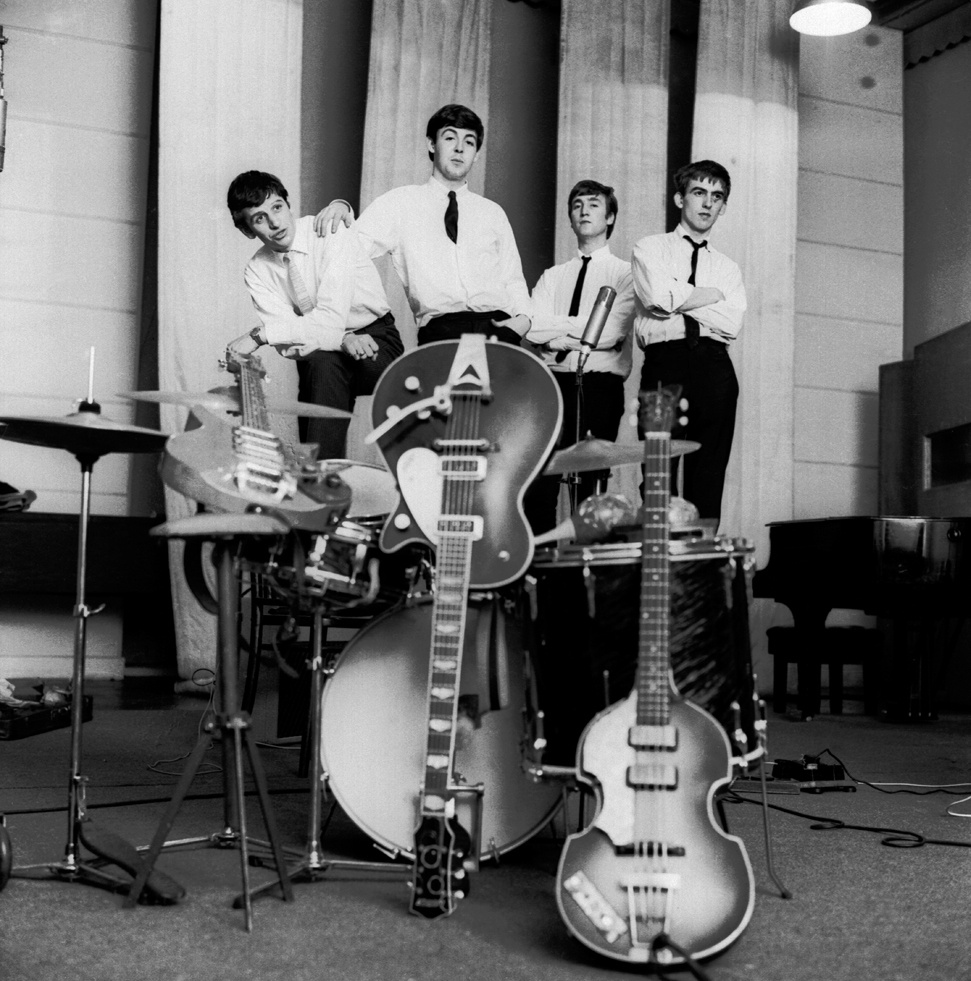

One week after recording How Do You Do It, The Beatles made a third visit to Abbey Road in what proved to be the final attempt at polishing off their debut single. To this end, George Martin had arranged for Andy White, a session drummer, to occupy the beat seat, which came as quite a shock to The Beatles and especially to Ringo, who had joined the group less than four weeks previously and wondered if this was a sign of things to come. As it happened, this was to be the only occasion that Ringo was replaced in such a fashion.
With so much thought already invested in Love Me Do it took very little time for The Beatles, with White, to complete a third recording. Quickly moving on, they also started and finished a re-make (following the 6 June attempt) of the song which would be issued as its B-side, Lennon-McCartney’s PS I Love You.
Finally, they committed to tape a third number, Please Please Me. Believed wiped, this earliest available recording of the song re-surfaced in 1994 and is being released here for the first time. It varies from the master take in a number of ways, the most obvious being the absence of harmonica, always regarded as the released recording’s trademark feature. The lead and harmony vocals, and the drum track, also differ.
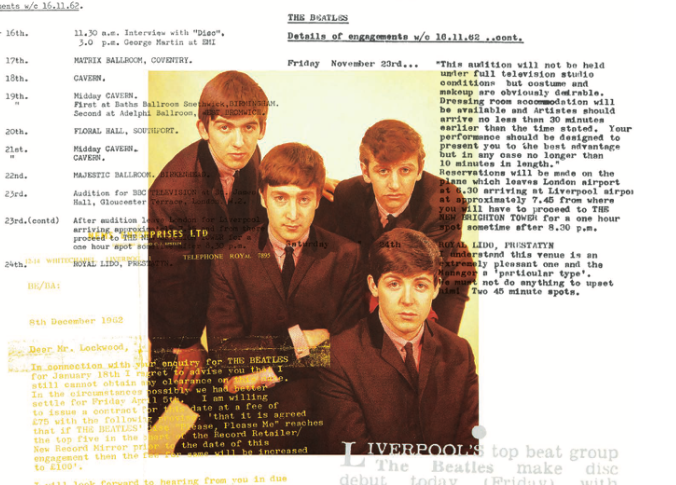
"In September we went down to London with Ringo and played for EMI again. By this time we did have a contract. This was our intro to that world. We came in the tradesman’s entrance and set up our own gear. We were there at 10.00, ready to work at 10.30 sharp, expected to have done two songs by 1.30. Then we had an hour’s break for lunch (which we paid for)." Paul
1963
INSTRUMENTS
RUSHWORTHS, LIVERPOOL
"We used to actually cut strings out of the piano for the bass (which I hear is impossible, but we managed to do it). If we needed an A string, say, we’d just get on the piano and go dink, dink, dink – A! And then it was out with the pliers, thinking, ‘They’ll never notice the odd string,’ and then try to fix it onto the bass. It worked occasionally but it’s hardly the thing to do and probably puts a huge strain on the guitar." Paul

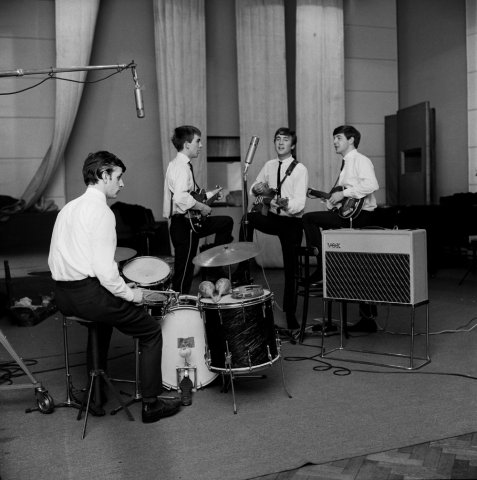
LOVE ME DO
"They’d sold a lot of records for ‘Love Me Do’ to get to Number Seventeen, which was great for a Liverpool band –– they’d made the charts! Now that The Beatles were known nationally, not just in the Northwest and Liverpool, they were being played on the radio and people everywhere were hearing them." Neil Aspinall

Rejection by Decca wounded The Beatles’ pride and caused them to fear that they might not succeed in gaining a recording contract. At least Decca granted them an audition: they couldn’t even get this far with the other major record companies, many turning them down merely on the basis of the My Bonnie single and the Decca audition tape being hawked around London by an increasingly dispirited Brian Epstein. EMI, too, or at least certain sections of the company, had also rejected The Beatles – before, by way of a tortuous route, these recordings were brought to the attention of George Martin, A&R man for the organisation’s Parlophone label. Exercising the sensible notion “What do I have to lose?” Martin told Epstein that he may as well take a look at The Beatles in person, and so it was arranged that the group would go to London, to EMI’s studio at 3 Abbey Road, St John’s Wood, on Wednesday 6 June 1962.
It is likely that The Beatles performed a good number of songs from their repertoire during this initial EMI session (the group’s only Abbey Road date with drummer Pete Best, before Ringo Starr replaced him in August 1962) but only four – Besame Mucho, Love Me Do, PS I Love You and Ask Me Why – were recorded on to tape. None was issued and only two have survived the years; both are being released here for the first time. Besame Mucho was another great favourite from The Beatles’ stage act, and, again, the influential hand of the Coasters was at work – The Beatles had clearly been paying attention to the group’s 1960 Besame Mucho single, especially to the B-side’s Part 2 version. Adding their own distinctive touch, The Beatles threw in the “Cha-cha-boom!”s for good measure.
The Beatles recorded Love Me Do three times in 1962 – on 6 June, and 4 and 11 September 1962 – on each occasion with a different drummer. The latter two were issued on record, featuring Ringo Starr and session player Andy White respectively, but the initial version, cut with Pete Best, was re-discovered only in 1994.
This version of Love Me Do is noticeably slower (and so longer) than the other two, although the tempo does vary. John Lennon’s harmonica opens and punctuates the recording, owing much to the influence of Bruce Channel’s harmonica-laced contemporary hit Hey! Baby. This late addition of harmonica to the arrangement of Love Me Do caused a problem not foreseen by The Beatles in private rehearsal: who would complete the vocal line “love me do” now that John had an instrument in his mouth? George Martin had the solution, promptly handing the line to Paul McCartney. Even though it was his song, Paul’s nervousness at being handed such a task during the already nerve-wracking debut recording session is audible.
GIGS AND TOURS
"After the Hamburg period we were driving up and down, doing gigs at the BBC in London a lot. We got a better van and made more money and then a better van still." George
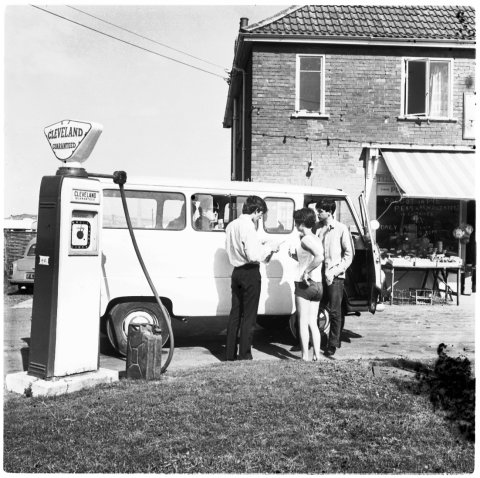
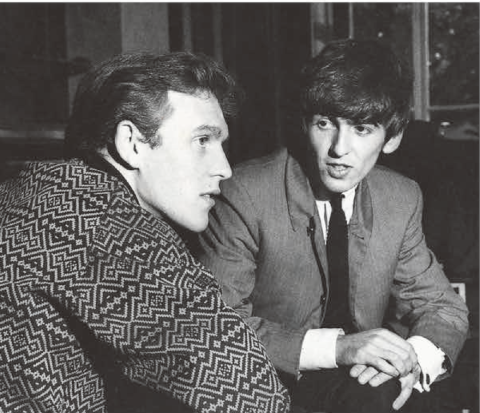
"Neil and Mal were all we ever had. Throughout our fame, we just had two guys looking after us. Mal joined us full- time in 1963. He was our bodyguard, but he was great at it because he would never hurt anyone. He was just big enough to say, ‘Excuse me, let the boys through.’" Ringo
"Doubling up rooms on the tours, after Pete Best left, I used to pair with John because I felt I’d been instrumental in talking them into getting Ringo into the band. I thought that rather than me hang out with Ringo, it would be best if he shared with one of them because that would integrate him better." George

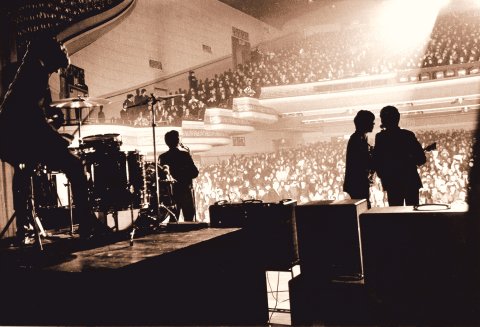
"We were quite glad for a short period that people were screaming; because with some of those early gigs, we wished that someone would cover the noise we were making. The equipment was often dreadful and we weren’t always too good." Paul
PLEASE PLEASE ME
"We’d had a Top Thirty entry with ‘Love Me Do’ and we really thought we were on top of the world. Then came ‘Please Please Me’ – and wham!" John
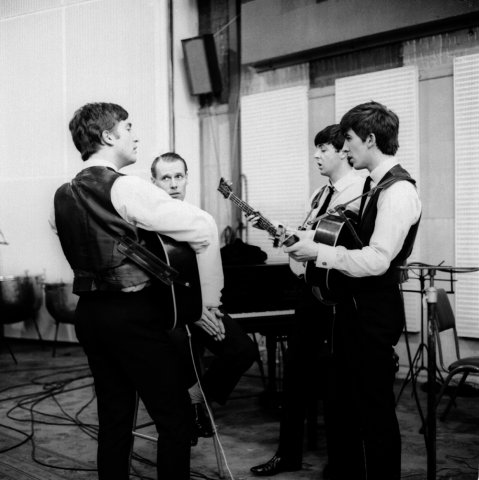

"That record tried to capture us live, and was the nearest thing to what we might have sounded like to the audiences in Hamburg and Liverpool. Still, you don’t get that live atmosphere of the crowd stomping on the beat with you; but it’s the nearest you can get to knowing what we sounded like before we became the ‘clever’ Beatles." John

One week after recording How Do You Do It, The Beatles made a third visit to Abbey Road in what proved to be the final attempt at polishing off their debut single. To this end, George Martin had arranged for Andy White, a session drummer, to occupy the beat seat, which came as quite a shock to The Beatles and especially to Ringo, who had joined the group less than four weeks previously and wondered if this was a sign of things to come. As it happened, this was to be the only occasion that Ringo was replaced in such a fashion.
With so much thought already invested in Love Me Do it took very little time for The Beatles, with White, to complete a third recording. Quickly moving on, they also started and finished a re-make (following the 6 June attempt) of the song which would be issued as its B-side, Lennon-McCartney’s PS I Love You. Finally, they committed to tape a third number, Please Please Me. Believed wiped, this earliest available recording of the song re-surfaced in 1994 and is being released here for the first time. It varies from the master take in a number of ways, the most obvious being the absence of harmonica, always regarded as the released recording’s trademark feature. The lead and harmony vocals, and the drum track, also differ.
"We went to Rhodes, Corfu and Athens. In Rhodes we wanted to see the Colossus so I asked the woman at the hotel bar, ‘Excuse me, where’s the Colossus?’ She said, ‘It’s gone now, son’ – that’s how much we hadn’t left home" Ringo

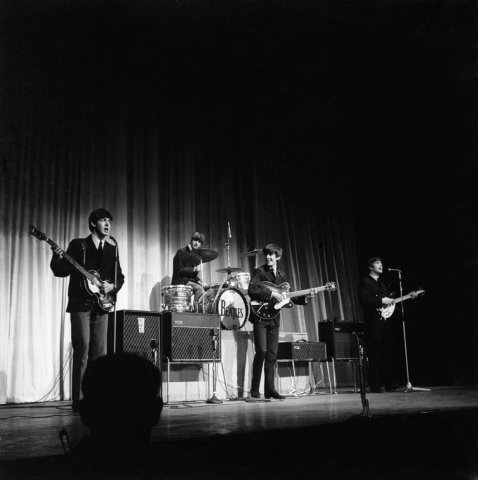
THE ROYAL COMMAND SHOW
"The fame really started from when we played the Palladium. Then we were asked to do the Royal Command Performance and we meet the Queen Mother, and she was clapping." Paul
"For our last number I'd like to ask your help. The people in the cheaper seats clap your hands, and the rest of you if you'd just rattle your jewellery. We'd like to sing a song called "Twist And Shout" John
WITH THE BEATLES
"We always record them exactly as we can play them. Even if we do put things on top, the basic thing we sing on a record we do live. We play and sing at the same time on the record, so if we can’t do it there, we don’t do it." John
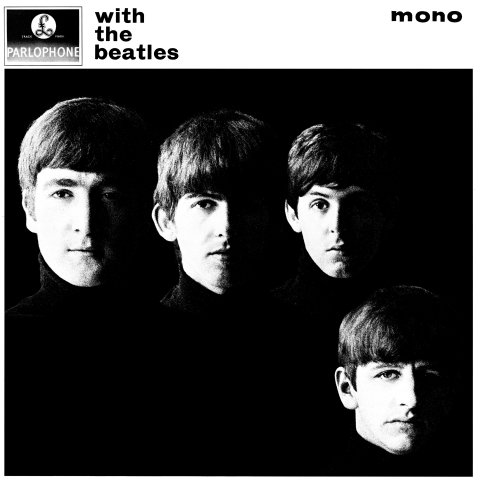

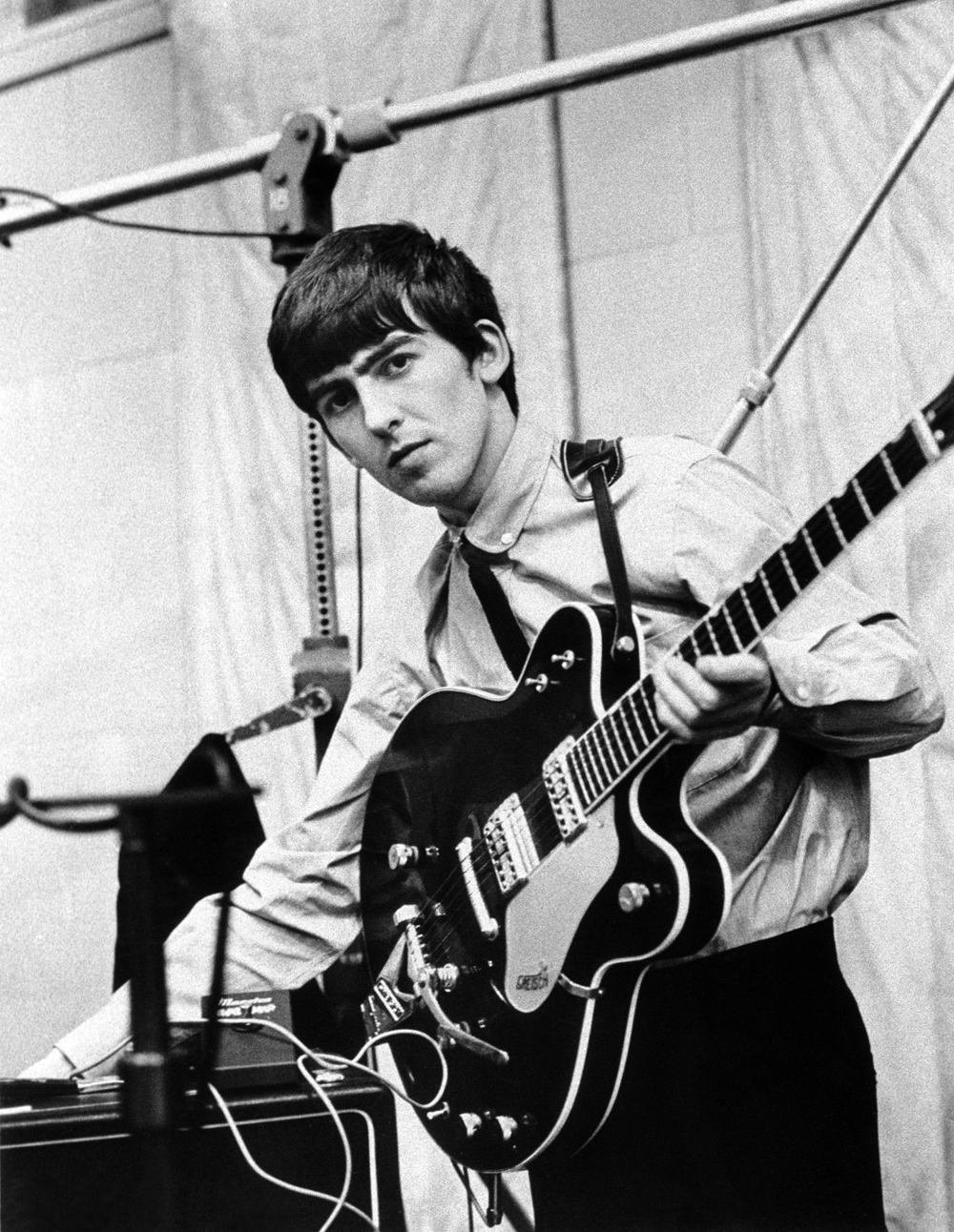
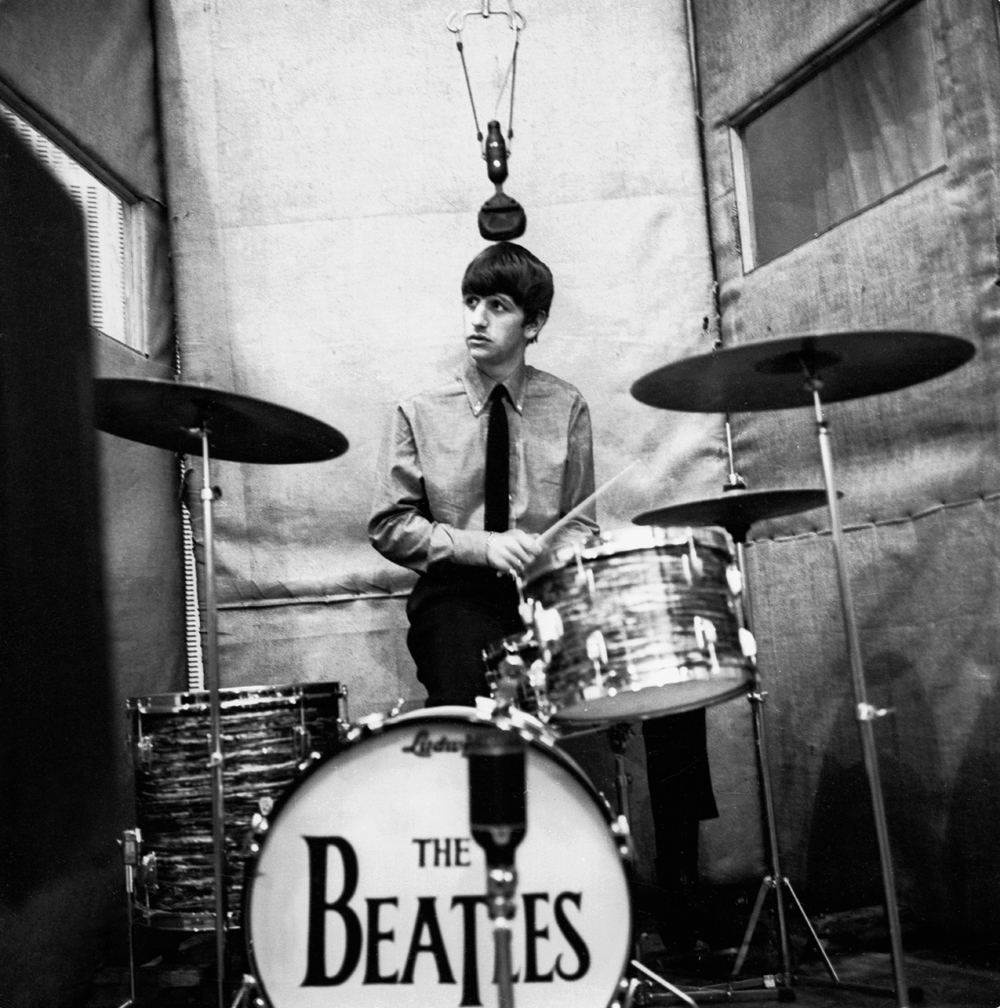
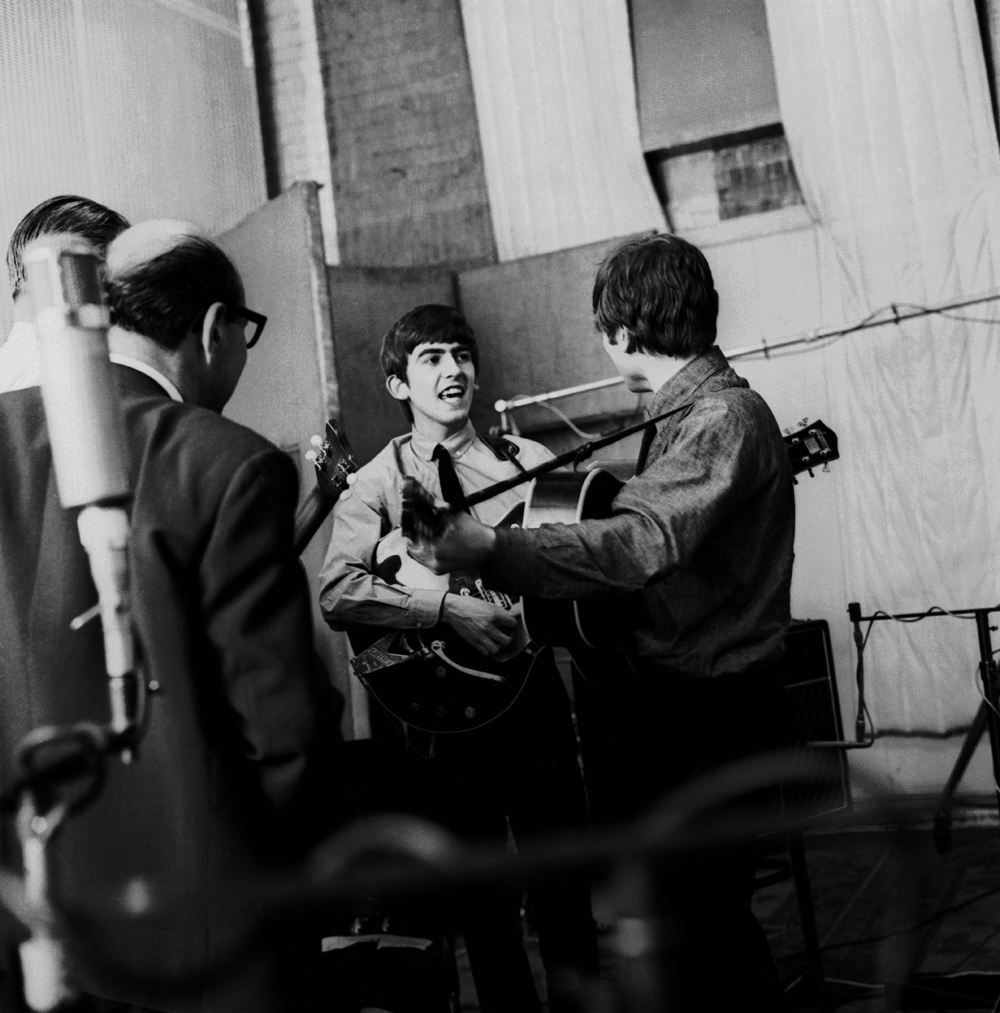

1964
PARIS, FRANCE
"We have a lot to live up to, especially being top of the bill at the Olympia. If we opened the show and didn’t do so well, then we wouldn’t have too much to live down, particularly as there are other acts following us. But topping the bill – well, let’s hope it all works out." John
"In January 1964 we played several concerts in Paris. The French audience was dreadful.
We had visions of all these French girls, ‘Ooh lá lá,’ and all that, but the audience, at least on the opening night, was all tuxedoed elderly slightly gay-looking boys were hanging round the stage door shouting, ‘Ringo, Ringo!’ and chasing our car. We didn’t see any of the Brigitte Bardots that we were expecting." George

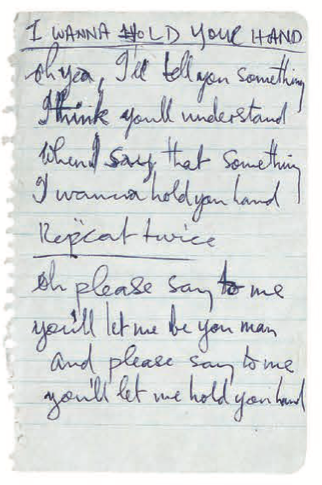
I WANT TO HOLD YOUR HAND
‘From Me To You’ was released – a flop in America. ‘She Loves You’ – a big hit in England, big Number One in England – a flop in the USA. ‘Please Please Me’ released over there – flop. Nothing until ‘I Want To Hold Your Hand’. Paul
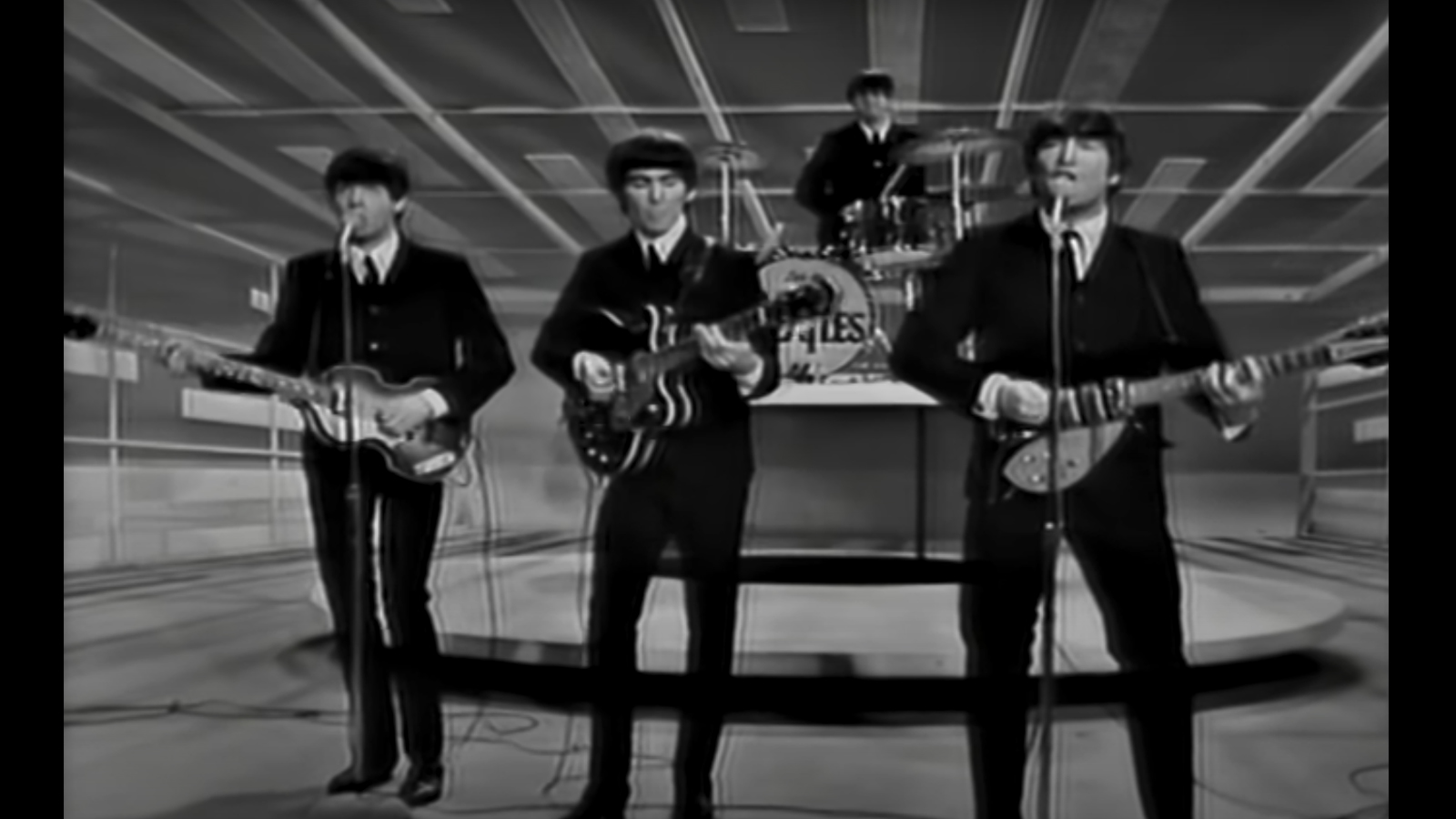
One of the four performed by The Beatles during an appearance on the British TV comedy series The Morecambe And Wise Show. It was a meeting of two teams at the top, for Eric Morecambe, the jokester, and Ernie Wise, his straight man, were recognised as Britain’s favourite comic act, establishing a reputation that lives on beyond Morecambe’s death in 1984, a passing that saddened the nation.
This Boy and I Want To Hold Your Hand – the B- and A-sides of The Beatles’ fifth single, a wildly successful 45 released at the end of November – were performed first, before The Beatles joined Morecambe and Wise for a comedy skit, Eric mistaking The Beatles for the Kaye Sisters (a British singing trio popular in the late 1950s) and calling Ringo “Bongo”, and George Harrison describing The Beatles as “the ones with the big fat hairy heads”, a parody of Morecambe’s perennial joke that Wise had “short fat hairy legs”. The comics and musicians then agreed to join forces for a musical number. Ernie and The Beatles kitted themselves out in boaters and striped jackets to perform Moonlight Bay (sung by Alice Faye in the 1940 movie Tin Pan Alley and by Doris Day in the 1951 film On Moonlight Bay) with piano backing provided by Kenny Powell. Eric, meanwhile, who had rushed off to dress for the performance, returned in a “Beatles” wig and collarless jacket, shouting “yeah yeah yeah”, “twist and shout” and (in the manner of Gerry and the Pacemakers’ hit) “I like it”. The collaboration ended with The Beatles’ trademark “ooohhh”, underlining the group’s willingness to self-mock – a trait that is always appreciated by a British audience.
Asked in 1994 to name his favourite of the many television programmes The Beatles had appeared on, Paul McCartney scarcely hesitated in responding The Morecambe And Wise Show.
CONQUERING AMERICA
"Things used to fall right for us as a band. We couldn’t stop it. The gods were on our side. We were fabulous musicians, we had great writers; it wasn’t like a piece of shit was being helped, and things just fell into place. We were doing countries: we’d conquered Sweden, we’d conquered France, we conquered Spain and Italy; but we were worried about America." Ringo
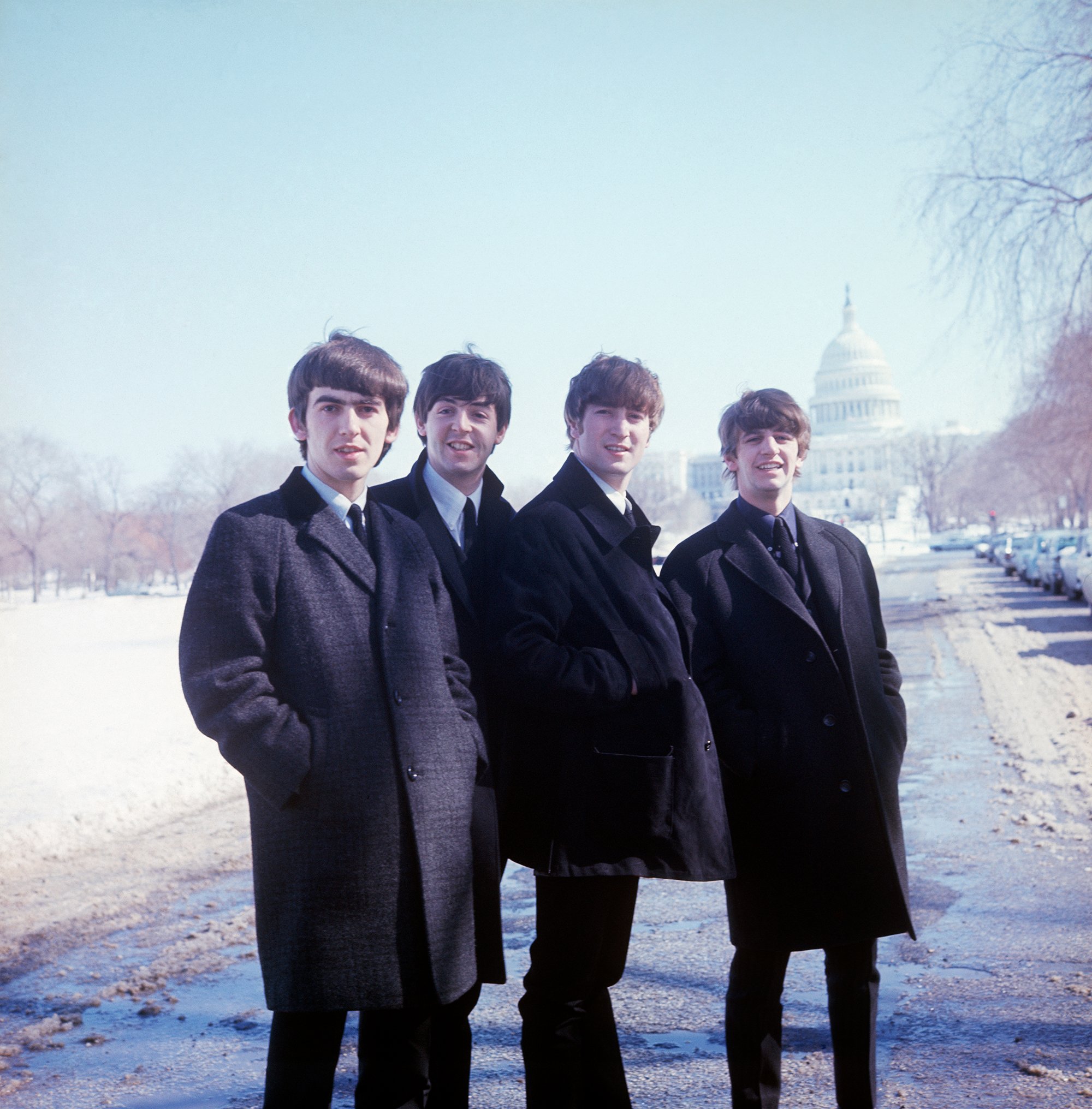
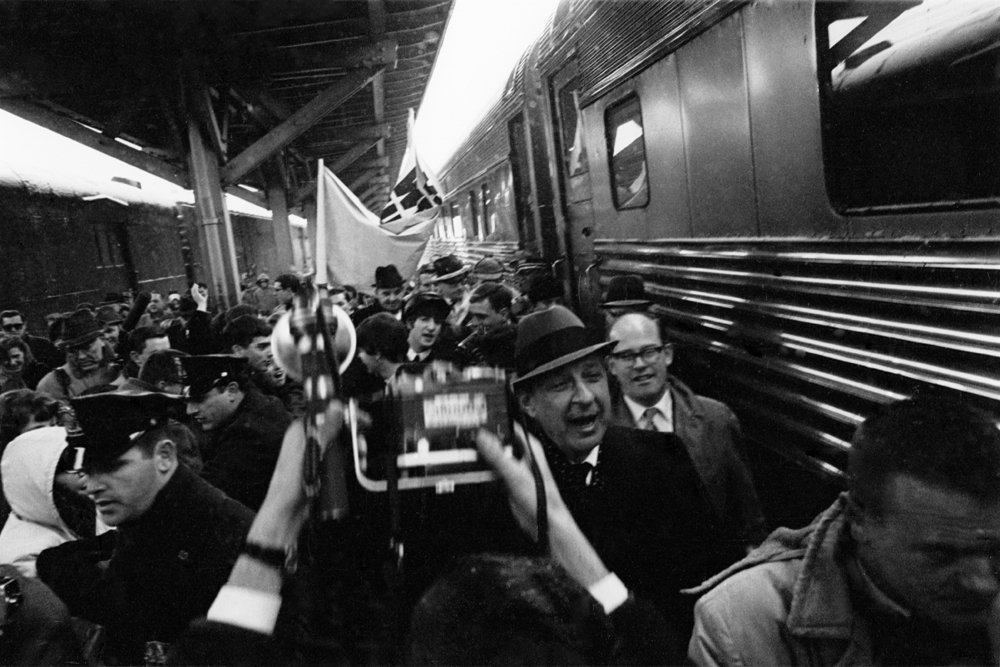

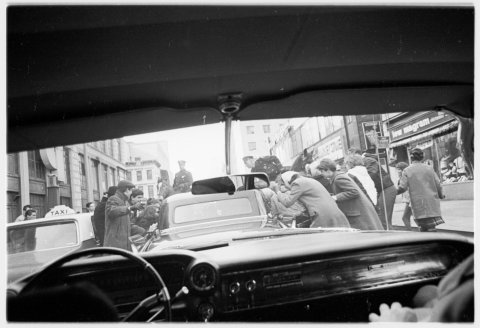
"I remember the great moment of getting into the limo and putting on the radio, and hearing a running commentary on us: ‘They have just left the airport and are coming towards New York City...’ It was like a dream. The greatest fantasy ever." Paul
"We were aware that Ed Sullivan was the big one because we got a telegram from Elvis and the Colonel. And I’ve heard that while the show was on there were no reported crimes, or very few. When The Beatles were on Ed Sullivan, even the criminals had a rest for ten minutes." George
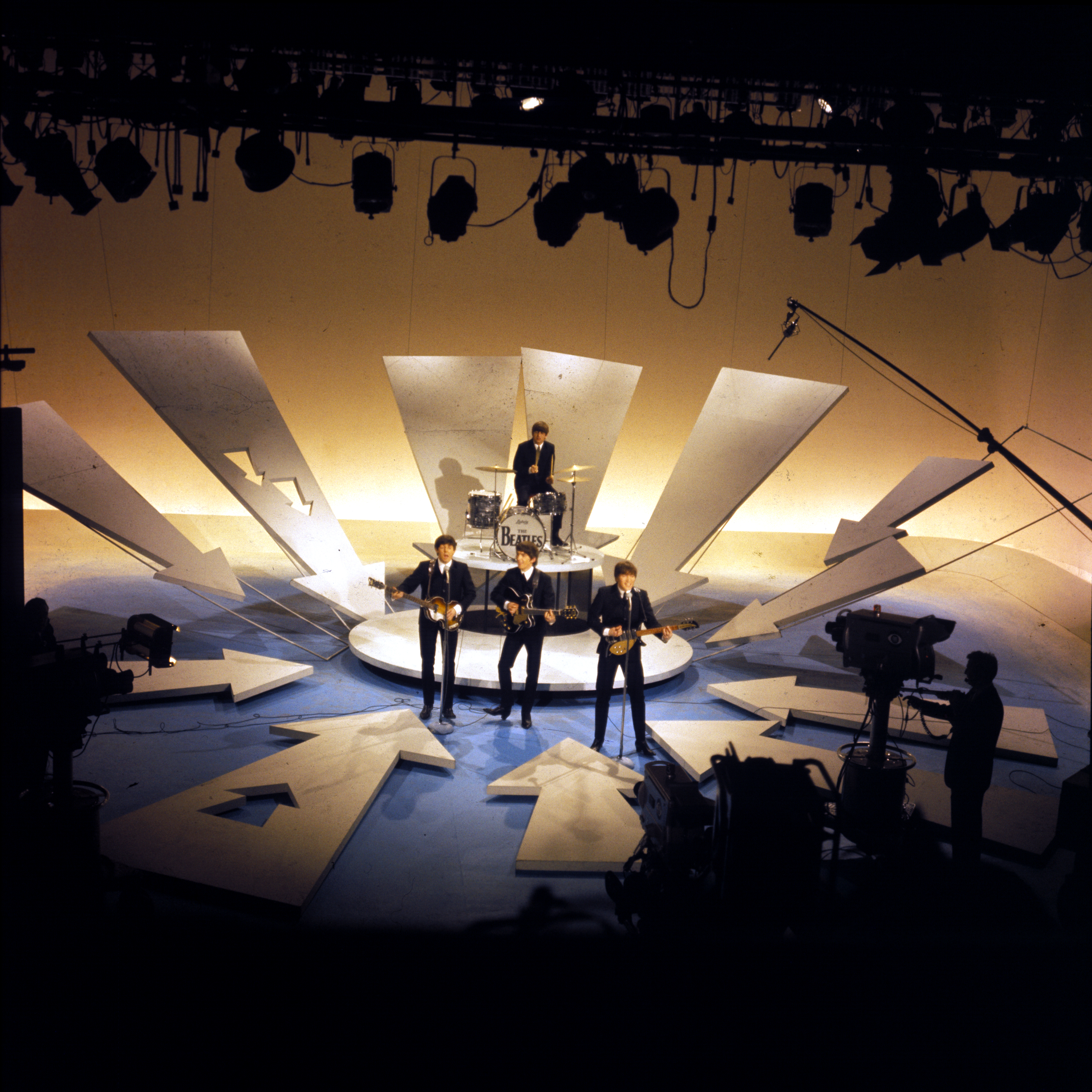
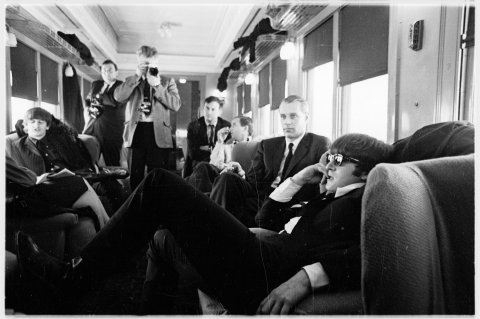
"We’d learnt the whole game: we knew how to handle the press when we arrived. The British press are the toughest in the world – we could handle anything. We were all right. I know on the plane over I was thinking, ‘Oh, we won’t make it,’ but that’s that side of me: we knew we would wipe them out if we could just get a grip." John
"Miami was just the most brilliant place I’d ever been to." Ringo

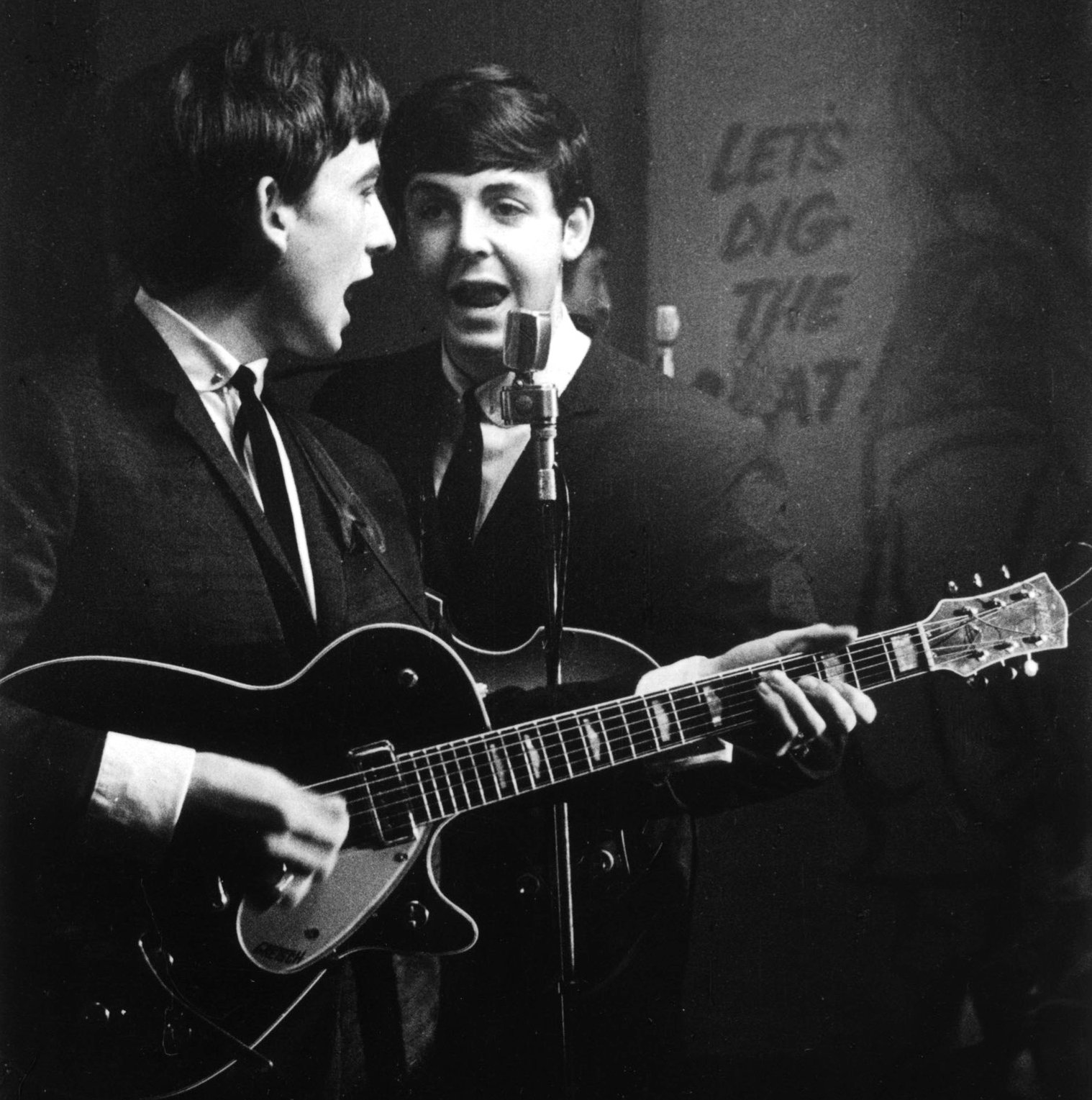
The music recording session for Around The Beatles took place on Sunday 19 April 1964 at an independent studio, IBC, situated just along the road from the BBC’s Broadcasting House headquarters on Portland Place.
Unlike Long Tall Sally and Boys, Shout never made it from The Beatles’ early stage repertoire on to their discs, which makes this Around The Beatles recording especially rare. The Isley Brothers’ 1959 original was so long that it had to be split over two sides of a 45, called Shout – Part I and Shout – Part II. This Beatles recording is essentially Part II, with Paul, John, George and Ringo swapping the lead vocal role while raising and lowering the volume in keeping with the lyric.
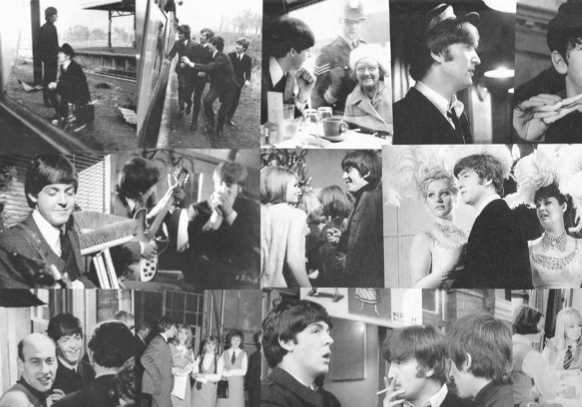
A HARD DAYS NIGHT
"Everyone in Liverpool thinks they’re a comedian. Just drive through the Mersey Tunnel and the guy on the toll booth will be a comedian. We’ve had that born and bred into us." George
"It was a great fantasy land for me, the movies, and suddenly we were in one. It was all so romantic, with the lights and coming to work in the limo." Ringo
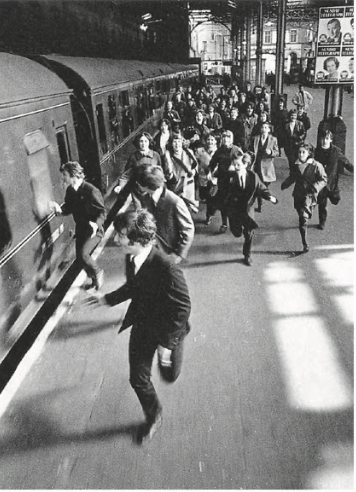
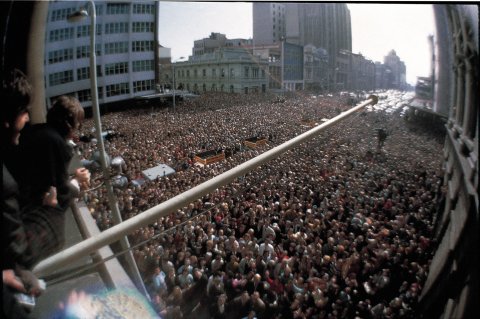
TOURING
"Melbourne was as wild as Adelaide, and I think that makes it equal. They were both about the wildest we’d ever seen. We never ask for civic receptions; we don’t expect them. If people do it, we’re flattered; but if they don’t, that’s that. There were crowds outside the hotel there. A lot of them got in – we’d find them in bathrooms." John
"All the tours merge into one in my mind." George
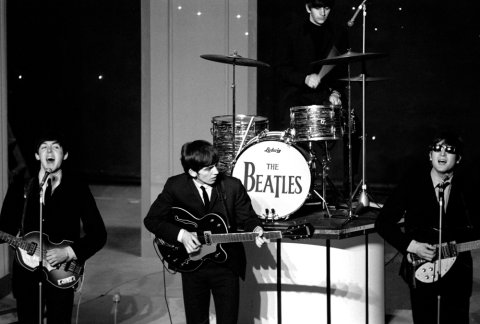


So, after completing Baby’s In Black and I’m A Loser, two new Lennon-McCartney songs that were ready to be recorded, The
Beatles turned back the calendar to mine a couple of their old R&B favourites. Both featured searing John Lennon lead vocals. First issued in 1962 by Dr Feelgood and the Interns, Mr Moonlight was the first.
The version on Beatles For Sale was a re-make, taped at EMI on 18 October, but four unreleased takes were recorded on 14 August, and a combination of One and Four is presented here. The first broke down after John’s laudable attempt at the shouted introduction. “Nearly!” commented Paul, a wry smile in his voice, as he encouraged his band mate to have another crack at it. Take 4, only the second complete run-through, lacked the organ track that distinguished the October re-make, but George’s guitar solo in the bridge proves that experimentation with new and different sounds was now a definite quest. It was at ten o’clock, when Abbey Road regulations stated that sessions were supposed to end, that The Beatles began Leave My Kitten Alone. This had been a 1959 R&B hit for Little Willie John, covered in 1960 by Johnny Preston, both versions entering the Billboard US Hot 100 in January 1961. The Beatles taped five takes of Leave My Kitten Alone before deciding that the last was the best and so adding overdubs … but that’s where they left it. The recording was never mixed down for release on Beatles For Sale and was destined to remain unissued for more than 30 years – until now.

"Our days off were sacred. If you look at our 1964 timetable you can see why. I didn’t realise until recently that we used to have a whole year of work, and then get something like 23rd November off – and then have to judge a beauty competition that day." Paul
BEATLES FOR SALE
"Recording Beatles For Sale didn’t take long. Basically it was our stage show, with some new songs – ‘Eight Days A Week’, for example. I remember writing that with John, at his place in Weybridge, from something said by the chauffeur who drove me out there." Paul
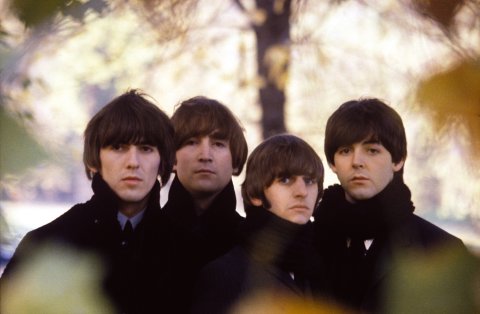
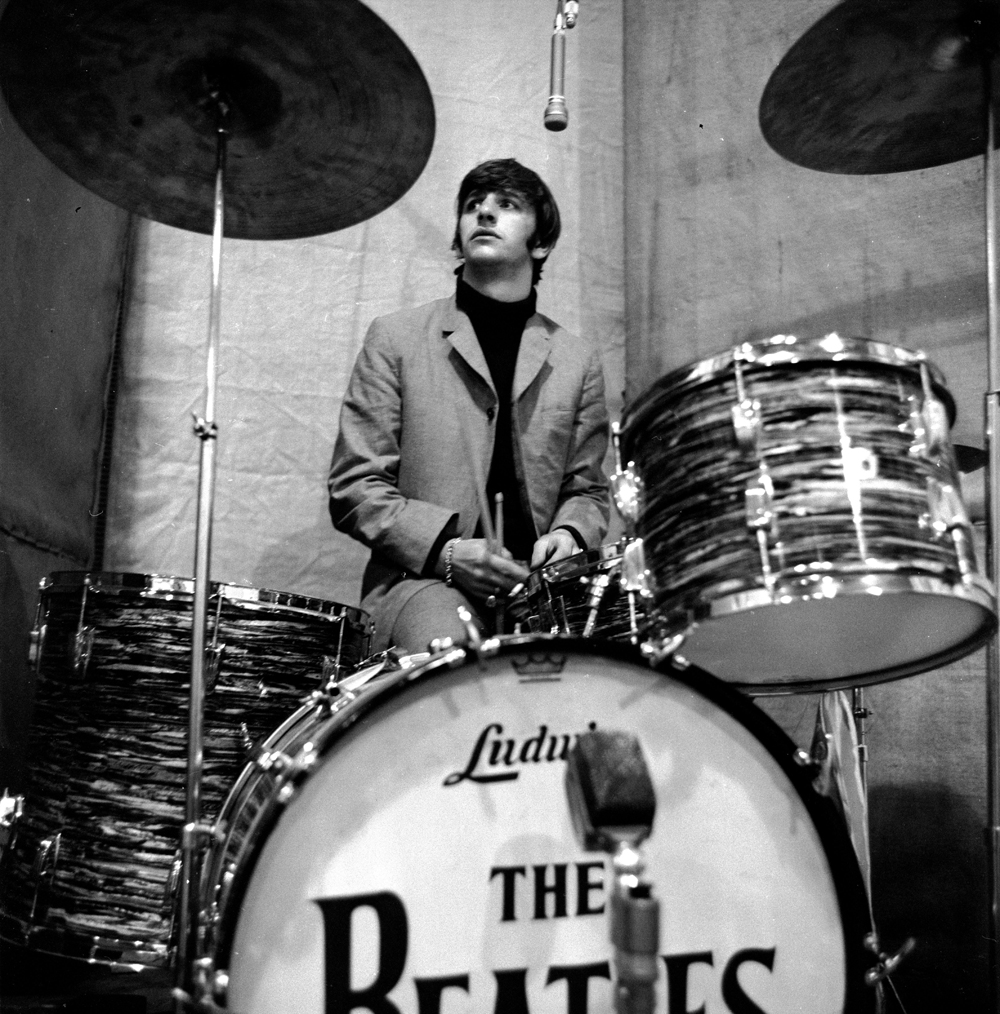

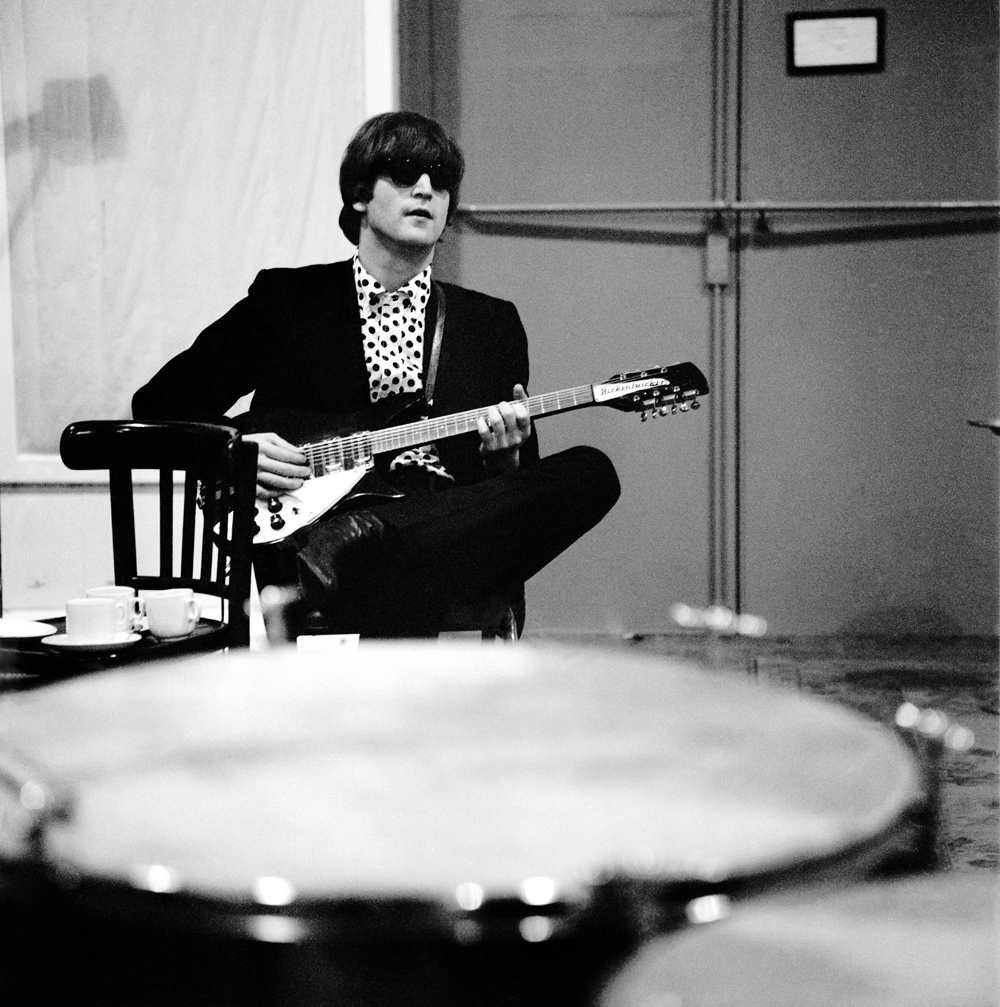
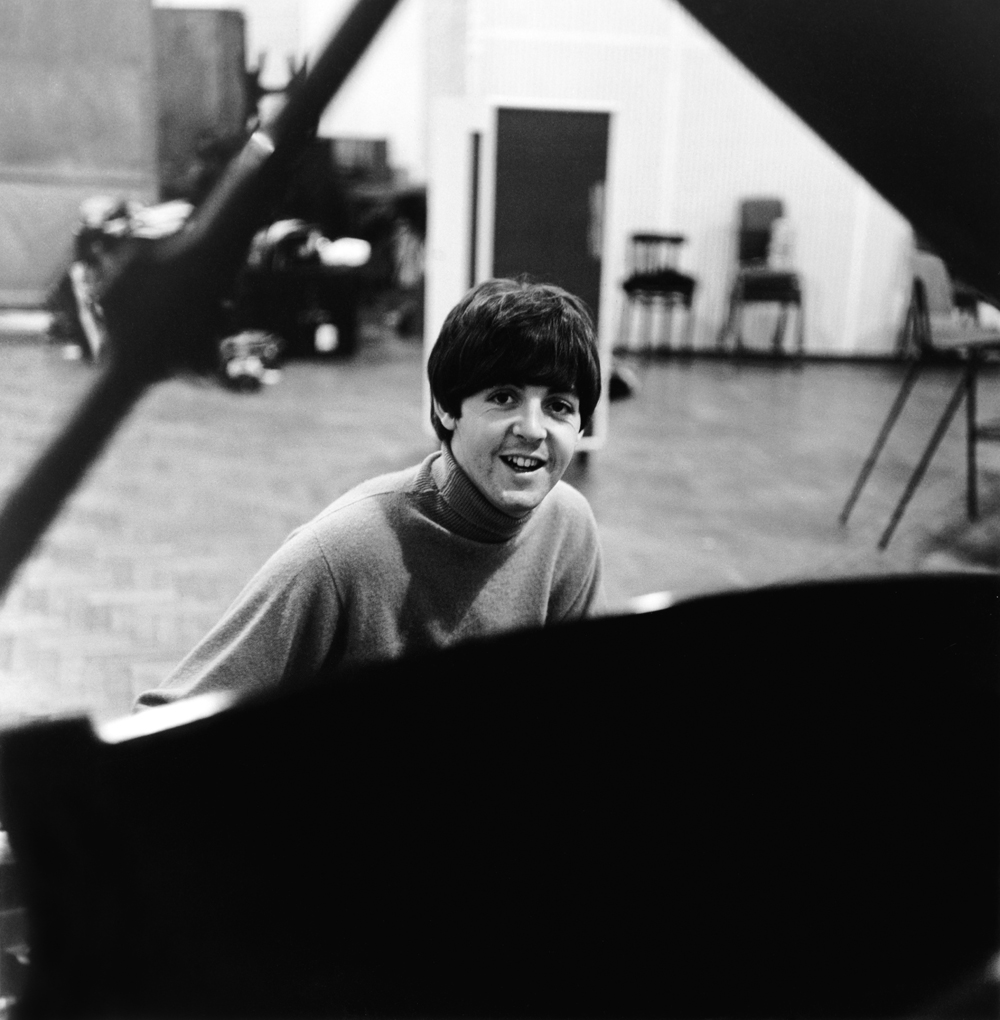
1965
HELP!
ON FILM LOCATION, BAHAMAS
"In February we started filming our second film, Help!. It was shot in the Bahamas, Austria and England. It was real fun doing the movie on location. We started off in the Bahamas and we spent a lot of time hanging about; but here we could hang about on the beach." George


"The first time that we were aware of anything Indian was when we were making Help! There was an odd thing about an Indian and that Eastern sect that had the ring and the sacrifice; and on the set in one place they had sitars and things – they were the Indian band playing in the background, and George was looking at them." John
"I recorded a song for the Help! album that was never released – ‘If You’ve Got Trouble’. George Martin found it in the vaults of EMI studios." Ringo
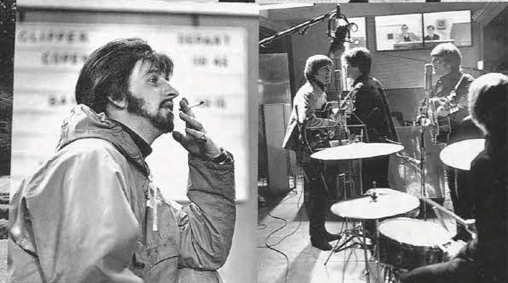
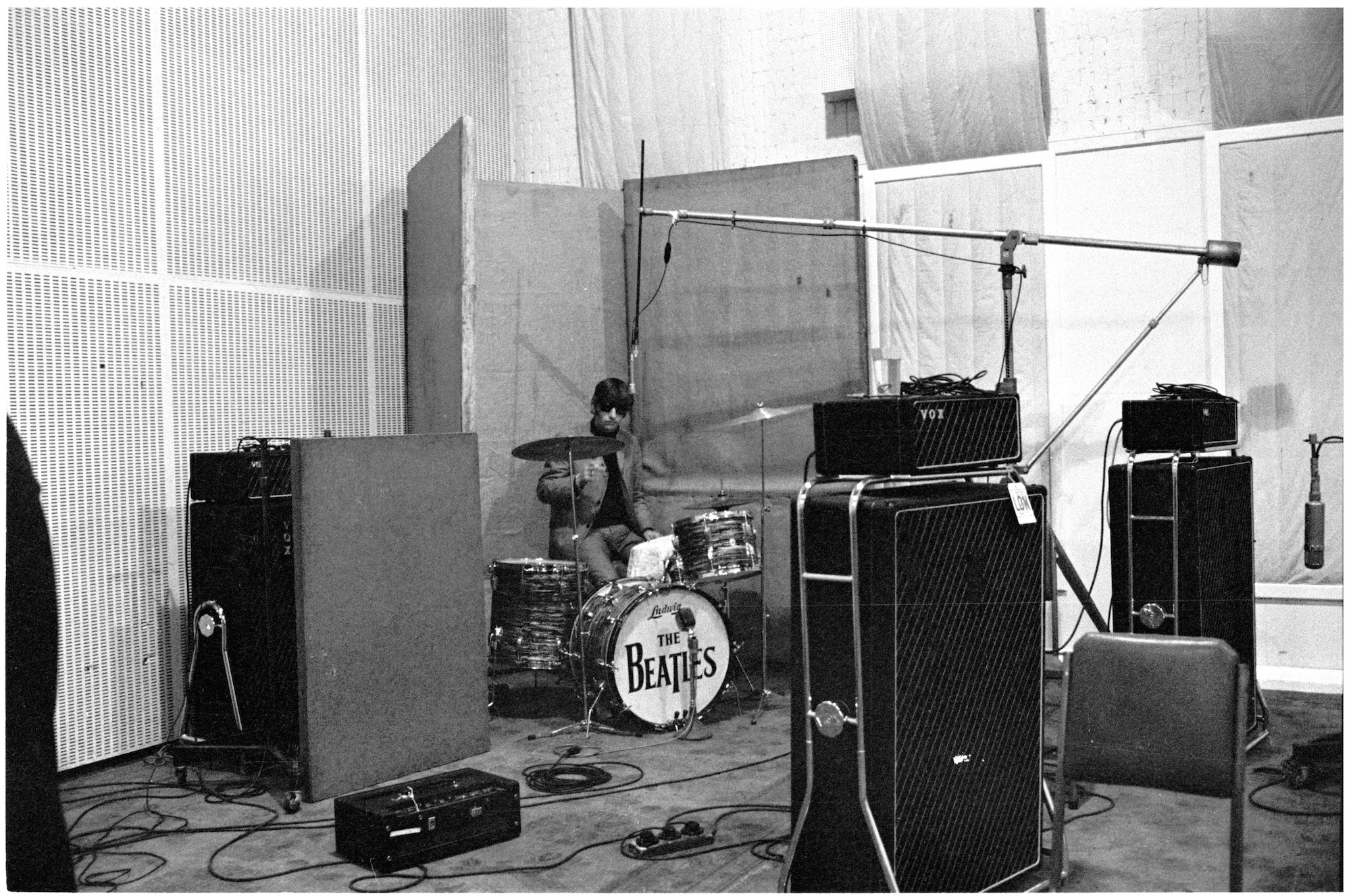
The Beatles captured the basic track of If You’ve Got Trouble in a single take and then lead and backing vocals were overdubbed, but the overall sound did not gel and it was soon decided to pass over the recording, and, indeed, the song itself. Ringo made his vocal contribution to Help! by taping a cover version of Buck Owens’ country number Act Naturally on 17 June 1965, and If You’ve Got Trouble has remained locked inside EMI’s archive until now.
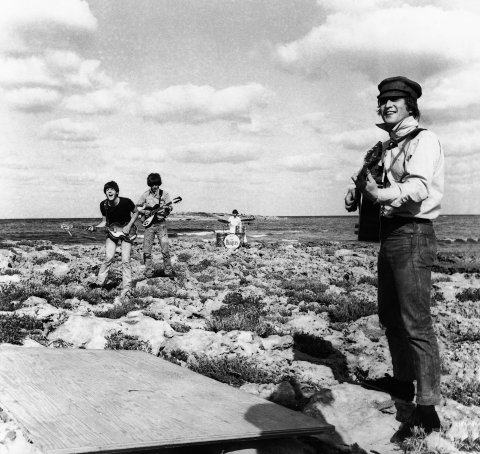
"The songwriting for the album was done mainly at John’s place in Weybridge. With A Hard Day’s Night John went home and came back with a lot of it, but with Help! we sat down and wrote it together. I remember us all sitting round trying to think, and John getting the idea for the title track. (...) From something he said later, I think ‘Help!’ reflected John’s state of mind. He was feeling a bit constricted by the Beatle thing." Paul
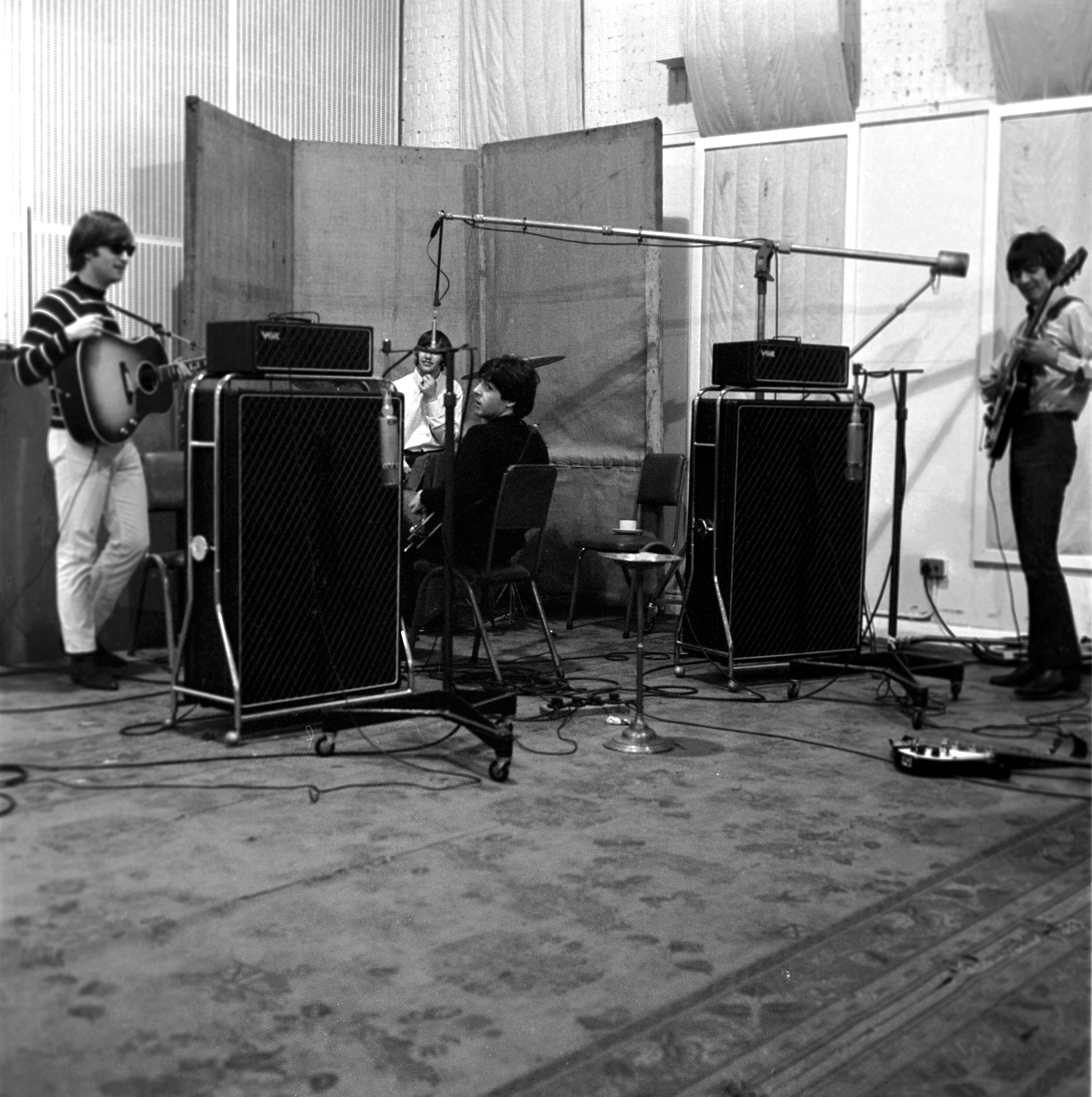
The fourth day of the Help! sessions was a typically productive one, The Beatles recording three new songs and mixing a number of other titles. The first of the three was John’s all-acoustic You’ve Got To Hide Your Love Away, taken from conception to completion in less than two hours during the afternoon. The master (Take 9) was distinguished by a flute overdub – the first time The Beatles had brought in an outside musician to augment their sound – but the version presented here is Take 5, the only other complete recording. This is prefaced by some studio banter: John’s “1,2,3, 1,2,3, hold on, hold on” count-in that is all there was of Take 1, and some “shattering” talk that preceded Take 2.
YESTERDAY
ABBEY ROAD STUDIOS
"I brought (Yesterday) into the studio for the first time and played it on the guitar, but soon Ringo said, ‘I can’t really put any drums on – it wouldn’t make sense.’ And John and George said, ‘There’s no point in having another guitar.’ So George Martin suggested, ‘Why don’t you just try it by yourself and see how it works?’ I looked at all the others: ‘Oops. You mean a solo record?’ They said, ‘Yeah, it doesn’t matter, there’s nothing we can add to it – do it.’" Paul

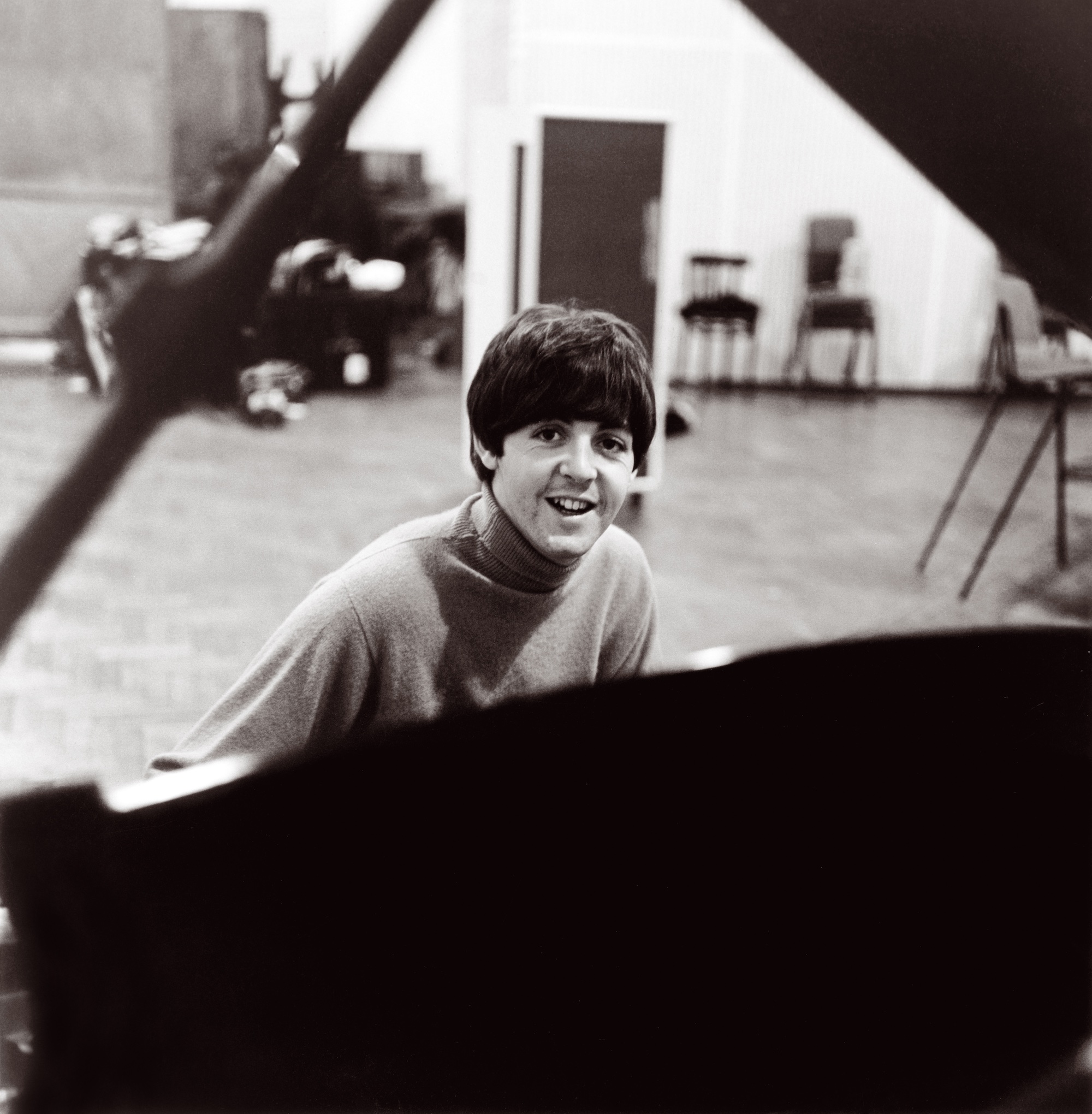
Yesterday attained fame and its everlasting elevated stature thanks principally to Paul’s captivating melody and lyric but also in part because The Beatles’ recording featured, innovatively, a string quartet. This was overdubbed (on 17 June) on to Take 2. Issued here for the first time is the only alternate studio recording of the song, Take 1, performed solo by Paul, voice and acoustic guitar. (While Paul can be heard instructing chord changes to George Harrison before starting up, George does not appear to be musically evident on the tape.) Paul transposed two lines of the finished master, “There’s a shadow hanging over me”/“I’m not half the man I used to be”, in this first take.
What remains, audible to the fore, is a combination of tamboura, tabla, dilruba and swaramandal tracks recorded in March, with violins, cellos and George’s sitar track overdubbed on 3 April.

"That first time I had acid, a light-bulb went on in my head and I began to have realisations which were not simply, ‘I think I’ll do this,’ or, ‘I think that must be because of that.’ The question and answer disappeared into each other. An illumination goes on inside: in ten minutes I lived a thousand years. My brain and my consciousness and my awareness were pushed so far out that the only way I could begin to describe it is like an astronaut on the moon, or in his spaceship, looking back at the Earth. I was looking back to the Earth from my awareness." George
MBEs
"Before you get an MBE, the Palace writes to ask if you’re going to accept it – because you’re not supposed to reject it publicly, and they sound you out first. I chucked the letter in with all the fan mail, until Brian asked me if I had it. He and a few other people persuaded me that it was in our interests to take it. I was embarrassed." John


SHEA STADIUM
55,600 FANS ATTEND HUGE STADIUM GIG
"Shea Stadium was an enormous place. In those days, people were still playing the Astoria Cinema at Finsbury Park. This was the first time that one of those stadiums was used for a rock concert. Vox made special big 100-watt amplifiers for that tour. We went up from the 30-watt amp to the 100-watt amp and it obviously wasn’t enough; we just had the house PA." George

A rare recording from The Beatles’ first and most famous concert at Shea Stadium – actually The William A Shea Municipal Stadium, home of the New York Mets baseball team.
The opening show of the group’s only 1965 North American tour – in which, for the first time, they mostly played big stadiums – the concert at Shea earned The Beatles world records both for audience attendance and box-office receipts, and led to
a colour TV film, The Beatles At Shea Stadium, made independently by Brian Epstein’s NEMS Enterprises in association with [Ed] Sullivan Productions. It was screened for the first time on 1 March 1966 by the BBC.
This recording of Everybody’s Trying To Be My Baby – written and first recorded by Carl Perkins in 1958 – has been taken from the soundtrack of the unedited Shea film footage, for the performance was excised from the TV special and so has remained unheard since the concert itself (when, in all likelihood, few of the 55,600 audience would have managed to hear it above their screams). George Harrison sang the lead vocal as he did on the October 1964 Beatles For Sale studio recording further overdubs), synchronously mixed into mono. The mix presented here, in stereo and slightly speeded up, is Take 3 – the basic track from 13 February, with bass and guitar added on 20 April – with unused vocal tracks (yielding a number of lyric variations from the master) overdubbed on to a separate “reduction”, Take 12, flown in.
MEETING ELVIS
"It was one of the great meetings of my life. I think (Elvis) liked us. I think at that time he may have felt a little bit threatened, but he didn’t say anything. We certainly didn’t feel any antagonism. I only met him that once, and then I think the success of our career started to push him out a little; which we were very sad about, because we wanted to co-exist with him. He was our greatest idol, but the styles were changing in favour of us." Paul
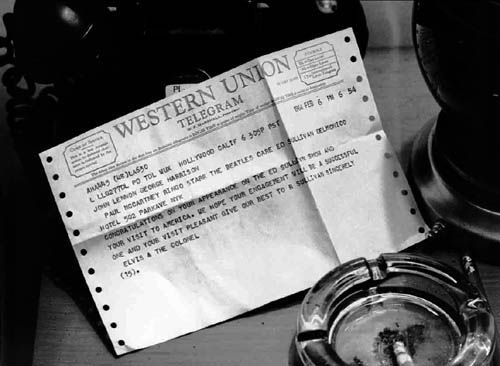
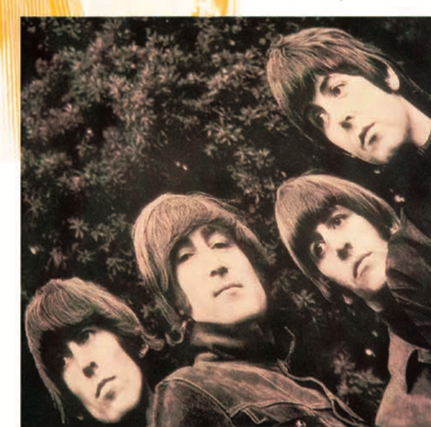
RUBBER SOUL
"Everything I, any of us, do is influenced, but it began to take its own form. Rubber Soul was a matter of having all experienced the recording studio; having grown musically as well, but [getting] the knowledge of the place, of the studio. We were more precise about making the album, that’s all, and we took over the cover and everything." John
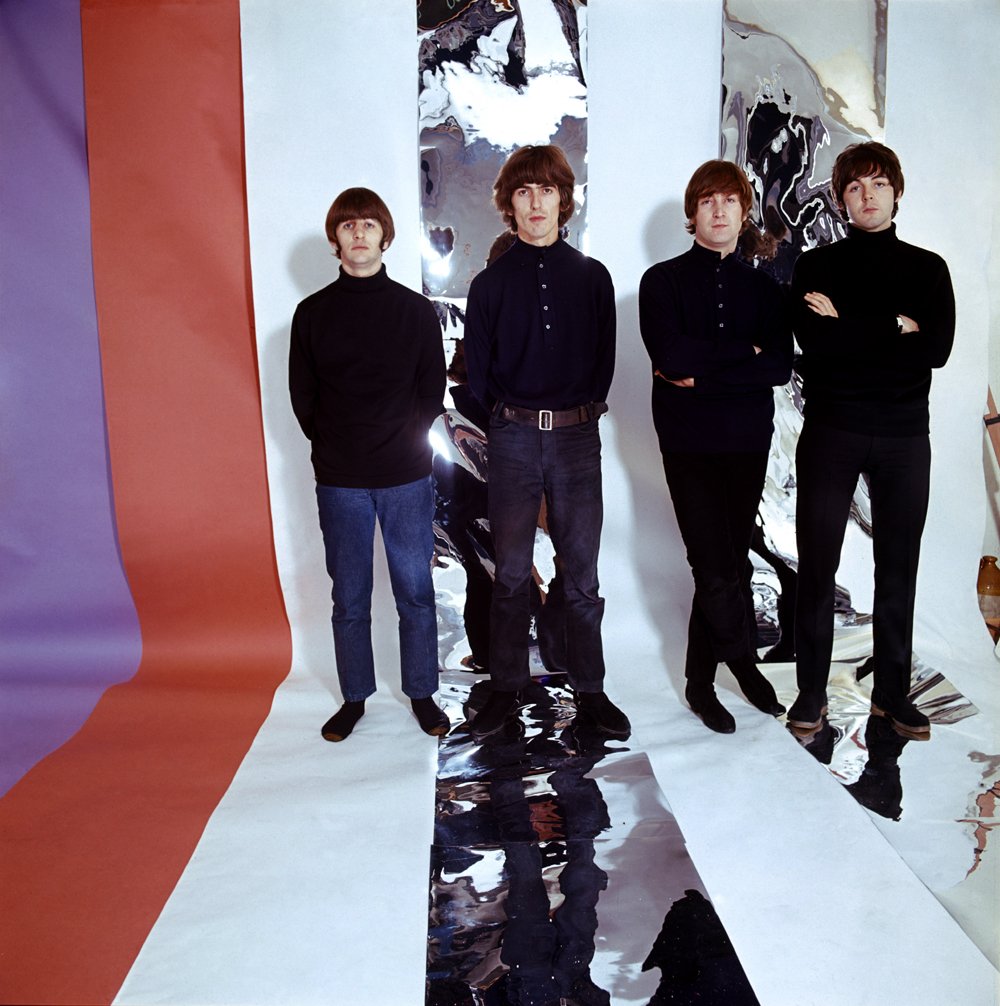
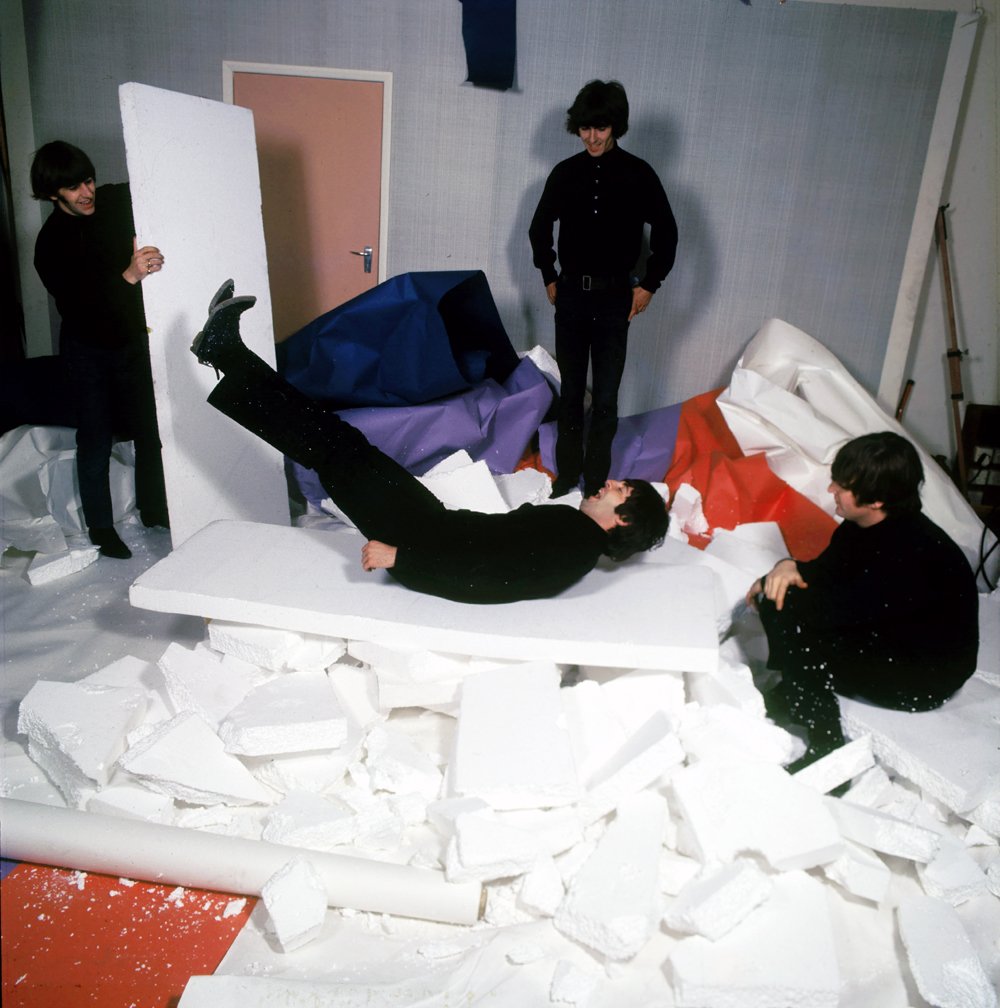

1966
EXPERIMENTATION
"I feel The Beatles were doing what they wanted to do, and a lot of it was that youthfulness of trying to change ideas. I think it allowed people to do things they wouldn’t have done if we hadn’t been out there." Ringo

The Beatles had worked almost every day for five years when, after issuing the single Day Tripper / We Can Work It Out, the album Rubber Soul and touring Britain for what turned out to be the last time, they demanded a break from this punishing schedule, taking off the first three months of 1966. Clearly refreshed, and full of yet more innovative ideas, they convened at EMI Studios on 6 April and began work on their seventh album, Revolver, with what turned out to be its closing and most progressive number, Tomorrow Never Knows. Here was Beatles music the like of which had never before been heard … or made.
Here was a dramatic new direction for a musical form that was ceasing to be “pop” and developing into “rock”. Here was a thrilling orgy of sound, all the more inventive for being made within the confines of 1966 four-track technology, less reliant on melody but focusing more on the conveyance of mind-pictures on to tape. Tomorrow Never Knows is all of this in a single piece of music, the released version (Take 3) being as stunning now as it was 30 years ago.
Recorded under its working title Mark I, Take 1, issued here for the first time, is notably different but, in its own way, just as compelling. The Beatles’ music had indeed come a long way in the four years since Love Me Do.
THE BUTCHER COVER
LONDON
"The 1966 American album, Yesterday and Today, was the one with the controversial sleeve. I think Brian Epstein had met a photographer in Australia called Robert Whitaker, who came to London where Brian introduced him to us. He was avant-garde and took a lot of photographs. He set up a photo session which I never liked personally at the time. I thought it was gross, and I also thought it was stupid. Sometimes we all did stupid things, thinking it was cool or hip when it was naïve and dumb; and that was one of them." George
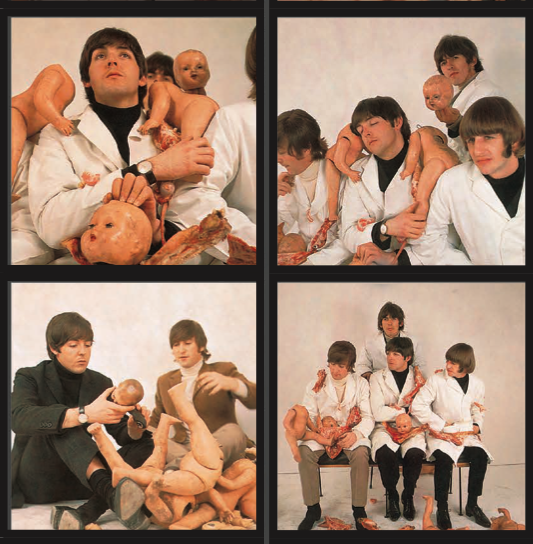
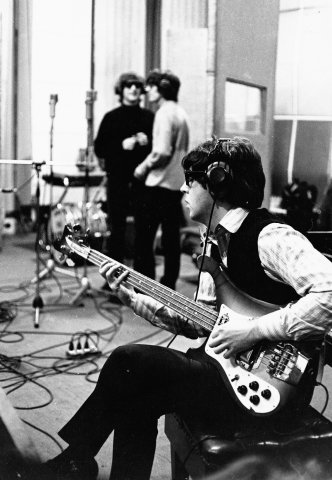
REVOLVER
ABBEY ROAD STUDIOS
"Their ideas were beginning to become much more potent in the studio. They started telling me what they wanted, and pressing me for more ideas and for more ways of translating those ideas into reality. With Revolver you can hear that the boys were listening to lots of American records and saying, ‘Can we get this effect?’ and so on. So they would want us to do radical things, but this time they’d shove in high EQ on mixing, and for the brass they’d want to have a really ‘toppy’ sound and cut out all the bass." George Martin
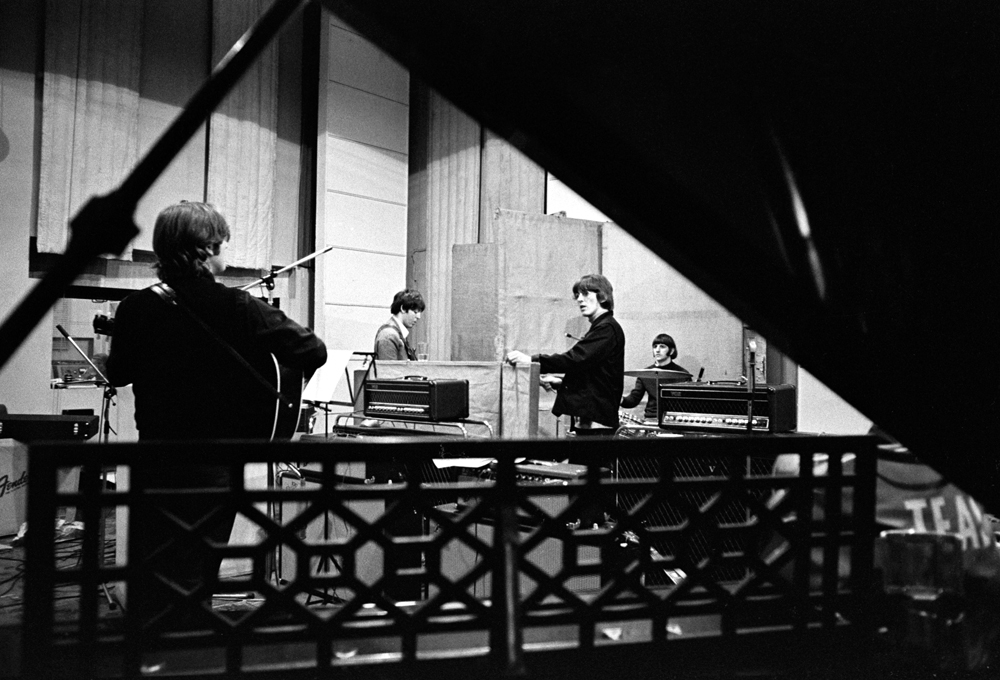
Two performances of John’s new song I’m Only Sleeping, recorded toward the end of the session in which vocal tracks had been overdubbed on to Eleanor Rigby. The first is a brief instrumental rehearsal – distinguished, unusually, by a vibraphone part being played along with the acoustic guitar and drums. This recording nearly didn’t survive: the session tape was spooled back after The Beatles had finished rehearsing and five proper, numbered takes were recorded anew from the top, wiping over the earlier sounds. The last of these stopped just short of where the rehearsals had concluded, leaving the final minute intact.
The other version presented here (in mono, because it was taped that way) is the first of these proper, numbered takes – recorded, curiously, two days after The Beatles had already cut takes 1 to 11, the last of which led to the Revolver master. None of these five further takes (acoustic guitar, simple percussion and joint John and Paul vocals) was used.

MAKING MUSIC VIDEOS
CHISWICK PARK
"The idea of making promotional films for ‘Paperback Writer’ and ‘Rain’ was that we didn’t have to go out. We felt it was a great idea to send the film out there. I don’t think we even thought of calling them ‘videos’. They were just going to be on TV." Ringo
"As time went by, the technology we were now using on records didn’t allow us to play a lot of songs live on tour. In those days there was no technology on stage as there is now. There were two guitars, bass and drums, and that was it. If we did stuff in the studio with the aid of recording tricks, then we couldn’t reproduce them on tour." Paul

BUDOKAN CONCERT
JAPAN
"We went to Tokyo. When we came off the plane, we were put in little 1940s-type cars along with policemen dressed in metal helmets, like Second World War American soldiers’ helmets. We were driven in convoy into town and taken to the Tokyo Hilton we were put in our upstairs suite – and that was it. We were only allowed out of the room when it was time for the concert." George
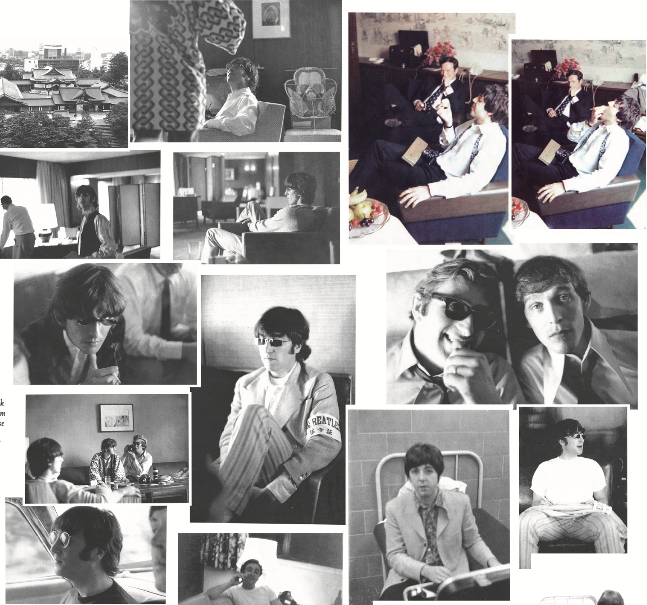

"(At the Budokan) the audience was very subdued. If you look at the footage from the shows you’ll see a cop on every row. They’d all get excited in their seats as we were playing, but they couldn’t express it." Ringo
TOUR IN ASIA
PHILIPPINES
"When we got to Manila, a fellow was screaming at us, ‘Leave those bags there! Get in this car!’ We were being bullied for the first time. It wasn’t respectful. Everywhere else – America, Sweden, Germany, wherever – even though there was a mania, there was always a lot of respect because we were famous showbiz personalities; but in Manila it was a very negative vibe from the moment we got off the plane, so we were a bit frightened. We got in the car, and the guy drove off with us four, leaving Neil behind. Our bags were on the runway and I was thinking, ‘This is it – we’re going to get busted.’" George
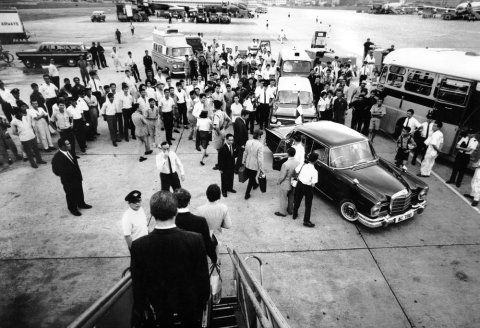

"I remember when we got back home a journalist asked George, ‘Did you enjoy it?’ And he said, ‘If I had an atomic bomb I’d go over there and drop it on them.’ It was an unfortunate little trip, but the nice thing about it was that in the end (when we found out what Marcos and Imelda had been doing to the people, and the rip-off that the whole thing allegedly was) we were glad to have (turned down Imelda Marcos' invitation to dinner). Great! We must have been the only people who’d ever dared to snub Marcos. But we didn’t really know what we were doing politically until many years later." Paul
BURNING BEATLES RECORDS
USA
"If I’d have said, ‘Television is more popular than Jesus,’ I might have got away with it. I am sorry I opened my mouth. I just happened to be talking to a friend and I used the word ‘Beatles’ as a remote thing – ‘Beatles’, like other people see us. I said they are having more influence on kids and things than anything else, including Jesus. I said it in that way, which was the wrong way. I’m not anti-God, anti-Christ, or anti-religion. I was not knocking it. I was not saying we are greater or better. I think it’s a bit silly. If they don’t like us, why don’t they just not buy the records?" John
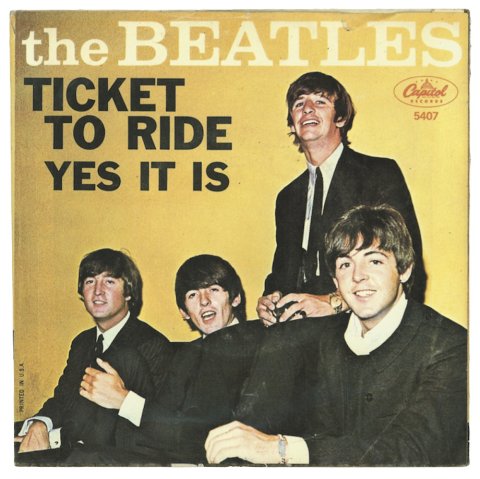
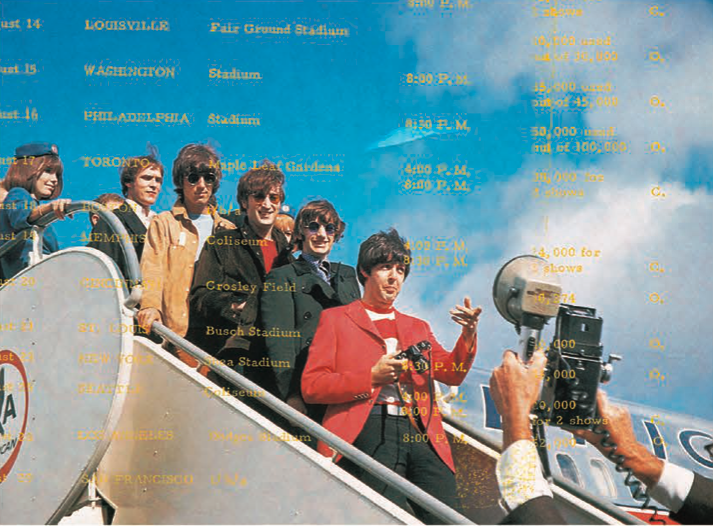
THE END OF TOURING
USA
"In 1966 the road was getting pretty boring and it was also coming to the end for me. Nobody was listening at the shows. That was OK at the beginning, but it got that we were playing really bad, and the reason I joined The Beatles was because they were the best band in Liverpool. I always wanted to play with good players. That was what it was all about. First and foremost, we were musicians: singers, writers, performers. Where we ended up on a huge crazy pedestal was not really in my plan. My plan was to keep playing great music." Ringo
"By Candlestick Park it was like, ‘Don’t tell anyone, but this is probably our last gig.’" Paul
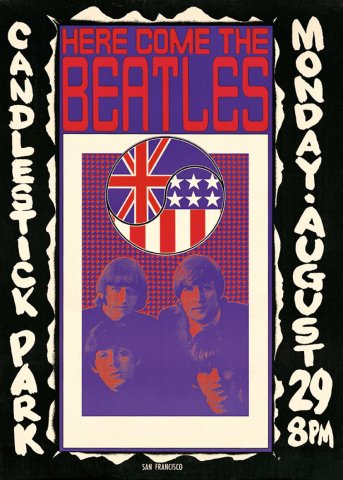

Strawberry Fields Forever (demo sequence)*
( John Lennon, Paul McCartney )
Recorded ‘Kenwood’, Weybridge, Surrey, November 1966
This is John Lennon, alone in his music room at home in Weybridge, recording demonstration versions of his latest composition. The date would be circa the Ides of November 1966: John wrote Strawberry Fields Forever (evoking memories of his childhood Liverpool) while on location in Almeria, Spain, during the shooting of the motion picture How I Won The War, and taped these demos after his return on the 7th but before The Beatles convened for recording at EMI on the 24th.
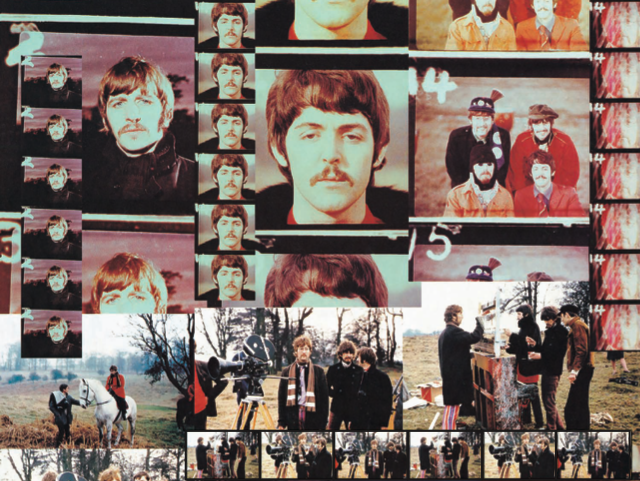
1967
STRAWBERRY FIELDS
"The only reason that ‘Strawberry Fields Forever’ and ‘Penny Lane’ didn’t go onto the new album was a feeling that if we issued a single, it shouldn’t go onto an album. That was a crazy idea, and I’m afraid I was partly responsible." George Martin
SGT PEPPER'S LONELY HEARTS CLUB BAND
ABBEY ROAD STUDIOS
"We were now in another phase of our career, and we were happy. We’d been through all the touring, and that was marvellous; but now we were more into being artists. We didn’t have to be performing every night, so instead we could be writing or chatting with our mates or visiting an art exhibition. (For instance, John and Yoko would never have met if we hadn’t had all that time spare for him to look around exhibitions and ‘bang a nail in’.) Having the time off gave us a lot of freedom to come in with crazy ideas." Paul


Within You Without You
(instrumental)
( George Harrison )
Recorded EMI Studios, London, 15, 16 and 22 March and 3 April 1967
Producer George Martin
Engineer Geoff Emerick
This is the master of the George Harrison composition that opened side two of Sgt Pepper’s Lonely Hearts Club Band, presented here in a fashion not previously available: remixed, without George’s vocal, from the different original four-track tapes that formed that master.

"Sgt Pepper was our grandest endeavour. It gave everybody – including me – a lot of leeway to come up with ideas and to try different material. (...) The great thing about the band was that whoever had the best idea (it didn’t matter who), that would be the one we’d use. No one was standing on their ego, saying, ‘Well, it’s mine,’ and getting possessive. Always, the best was used. That’s why the standard of the songs always remained high. Anything could happen, and that was an exciting process." Ringo
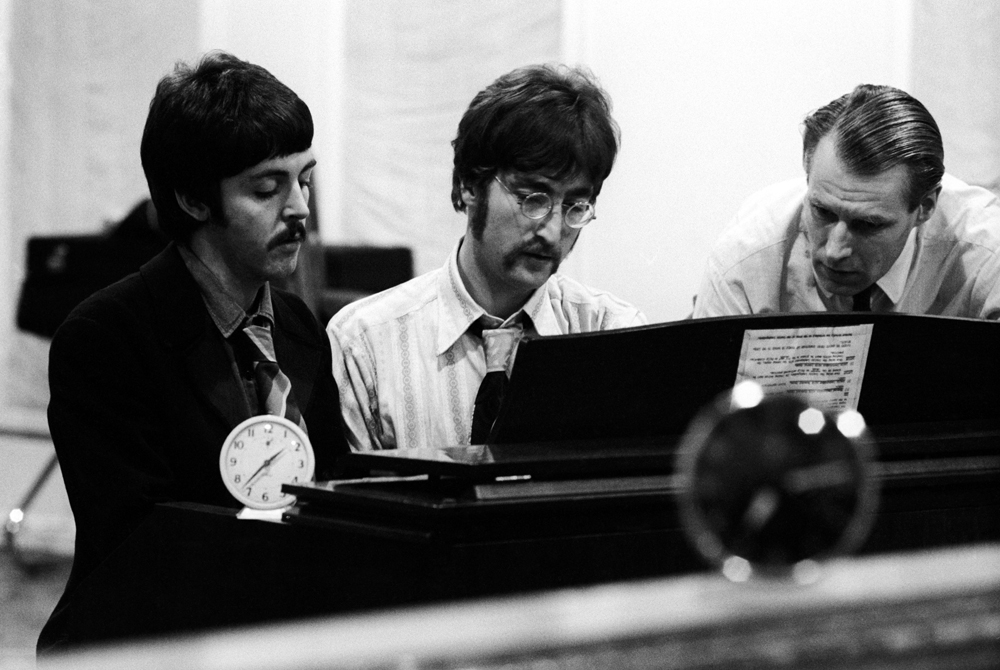
A Day In The Life
( John Lennon, Paul McCartney )
Recorded EMI Studios, London, 19, 20 January and 10 February 1967
Producer George Martin
Engineer Geoff Emerick
Assembled expressly for the Anthology, this composite mix embraces the best of the unreleased outtakes of A Day In The Life, plotting the making of the song that brought such a monumental close to the album Sgt Pepper’s Lonely Hearts Club Band.
The opening talk, the sounding of the alarm clock (used so effectively in the finished master) and the intro – John muttering “sugar plum fairy, sugar plum fairy” instead of the more conventional count-in – is from the start of Take 1, when the song was first taped on 19 January 1967.
The main body of the music is Take 2, recorded during the same session. At this point the tape features John’s acoustic guitar and haunting live lead vocal, sundry percussion instruments, piano (played by Paul) and an echo-drenched Mal Evans, one of The Beatles’ two assistants, counting out the first of two long gaps that would later be so famously filled with the orchestral crescendos.
After the counting, the track slips into mono to illustrate a guide vocal from Paul, taped on 20 January as an overdub on to Take 6 but then superseded by a better recording of the passage on 3 February. The original survives, however, thanks to a mono mix done in the interim, on 30 January.
"The Our World broadcast was great, going out to hundreds of millions of people around the world. It was the first worldwide satellite broadcast ever. It’s a standard thing that people do now; but then, when we did it, it was a first. That was exciting; we were doing a lot of firsts. They were exciting times." Ringo
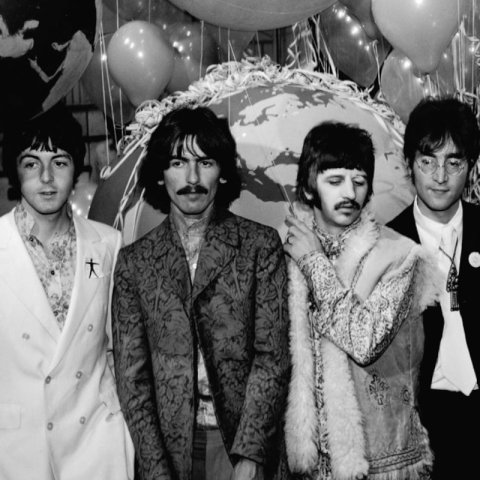

"In Bangor we heard that Brian had died. That was a real downer because of the confusion and the disbelief: ‘You’re kidding me!’ Your belief system gets suspended because you so badly don’t want to hear it. You don’t know what to do with it. If you look at our faces in the film shot at the time, it was all a bit like: ‘What is it? What does it mean? Our friend has gone. ’It was more ‘our friend’ than anything else. Brian was a friend of ours, and we were all left behind." Ringo
"One did everything. One worked very hard. One shouted from the rooftops about the group when there was no enthusiasm for groups. People thought you were mad, but you went on shouting." Brian Epstein

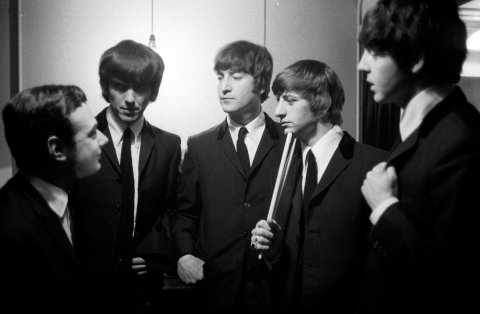
"It hurts when someone close dies, and Brian was very close. (...) We all feel it, but these talks on Transcendental Meditation have helped us to stand up to it so much better. (...) Brian is just passing into the next phase. His spirit is still around, and always will be. It’s a physical memory we have of him, and as men we will build on that memory. It’s a loss of genius, but other geniuses’ bodies have died as well, and the world still gains from their spirits." John
"I’ve no idea who thought of Apple first. It was a bad idea, whoever thought of it! I think it came out of Brian dying. (…) We were thinking, ‘Oh, well, we’d better just make our own thing.’ Because of the hippy period, everybody thought, ‘Well, we can do this, and we can do that, and we can have a new way of doing things.’ It was true, really, and it was a brave attempt in many ways." George
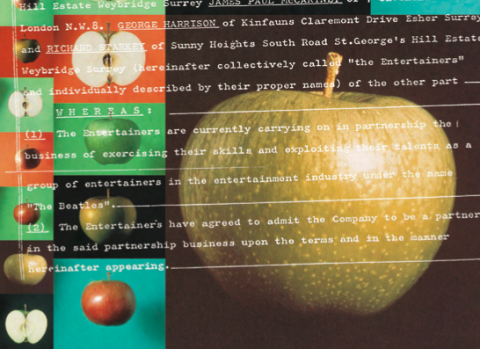

"I’m not sure whose idea Magical Mystery Tour
was. It could have been mine, but I’m not sure whether I want to take the blame for it!" Paul
"Magical Mystery Tour is one of my favourite albums, because it was so weird. ‘I Am The Walrus’ is also one of my favourite tracks – because I did it, of course, but also because it’s one of those that has enough little bitties going to keep you interested even a hundred years later." John
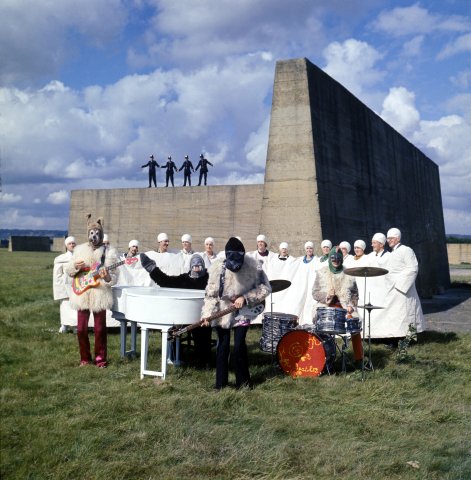
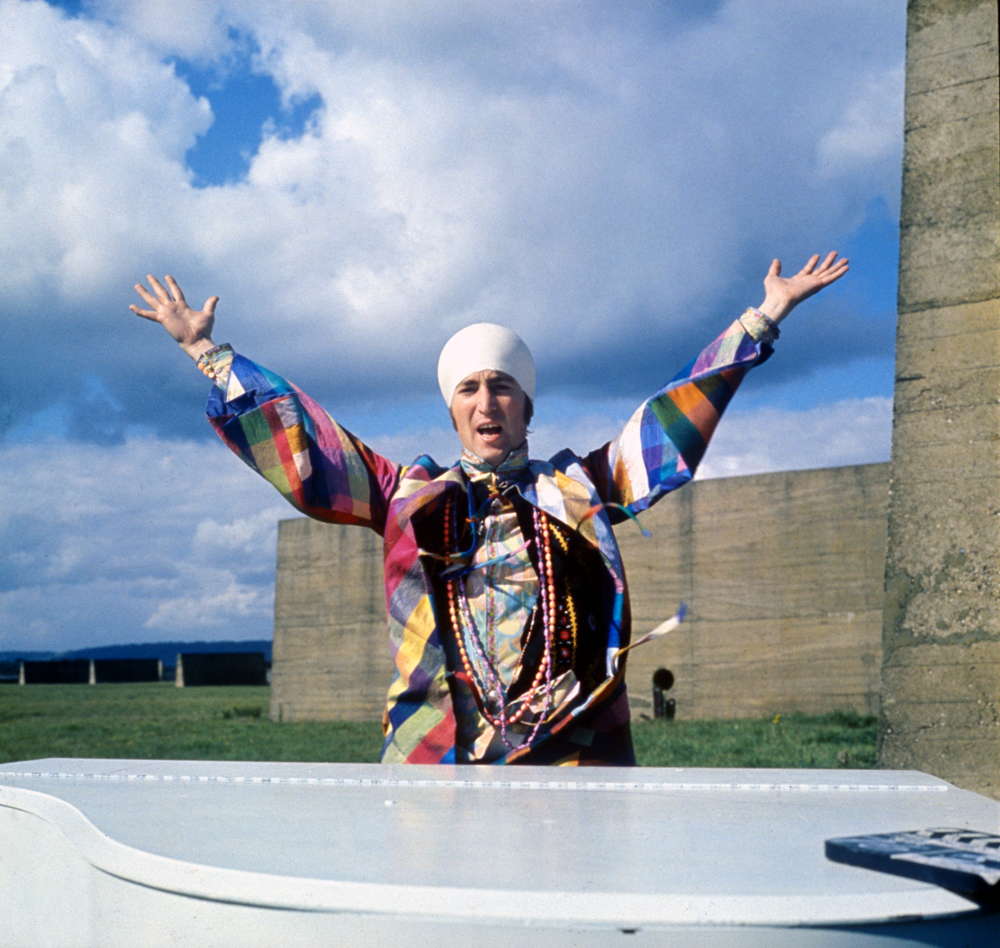
I Am The Walrus
( John Lennon, Paul McCartney )
Recorded EMI Studios, London, 5 September 1967
Producer George Martin
Engineer Geoff Emerick
Lacking at this juncture the many overdubs and effects that would turn it into perhaps the most compelling master ever issued by The Beatles, this is Take 16 of I Am The Walrus, the basic track on to which all the extras were added.
Using this recording as his reference, George Martin wrote the string and backing vocal arrangement that not only was sympathetic to John Lennon’s composition but enhanced it in a most dramatic fashion.
1968
INDIA
"I was in Bombay, working on the soundtrack for the film Wonderwall – a Sixties hippy movie directed by Joe Massot. He asked me if I would do the music, but I told him I didn’t write music for films. Then he said that whatever I gave him, he would use. That sounded pretty simple, and I thought: ‘I’ll give them an Indian music anthology, and who knows, maybe a few hippies will get turned on to Indian music.’" George

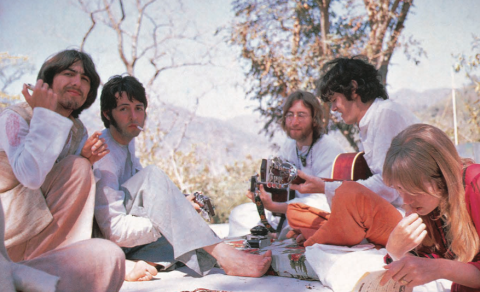
"We’re all going to India for a couple of months to study Transcendental Meditation properly. We want to learn properly so we can propagate it and sell the whole idea to everyone. This is how we plan to use our power now – they’ve always called us leaders of youth, and we believe that this is a good way to give a lead." John
"Being fairly practical, I had set a period for staying in Rishikesh. To start with I thought, ‘Whoa, this could be it, man. I could never come back if this works.’ Then I thought, ‘Wait a minute, I’ll go for a month. Even if it’s incredible I’ll still come back after a month.’ If it had turned out to be something we really had to go back for, I would have gone back. But I was quite happy to leave." Paul
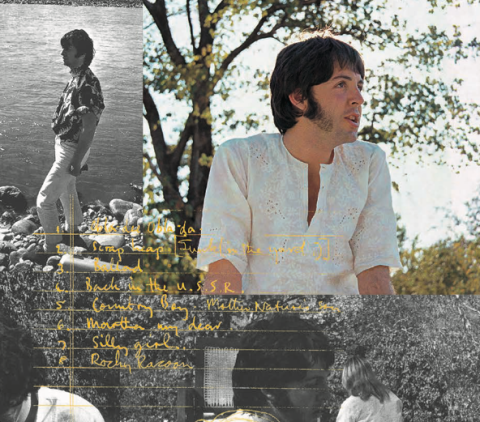
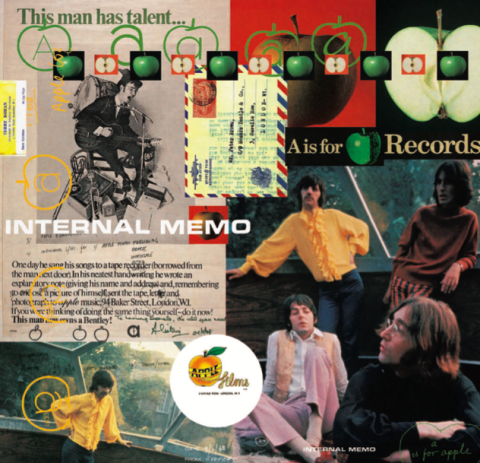
FORMING APPLE
LONDON
"It’s a business concerning records, films and electronics and, as a sideline, manufacturing or whatever. We want to set up a system whereby people who just want to make a film about anything don’t have to go down on their knees (probably yours)." John
"The records Apple made were exciting. It started with Mary Hopkin, and then George brought Jackie Lomax and later Billy Preston. I put John Tavener on the label. His brother was working for me as a builder with a firm in Hampstead. He came to me and said, ‘Would you like to hear my brother’s tape?’ I loved it. We were very open to all different kinds of music, so we thought we’d put it on Apple. That was my contribution." Ringo
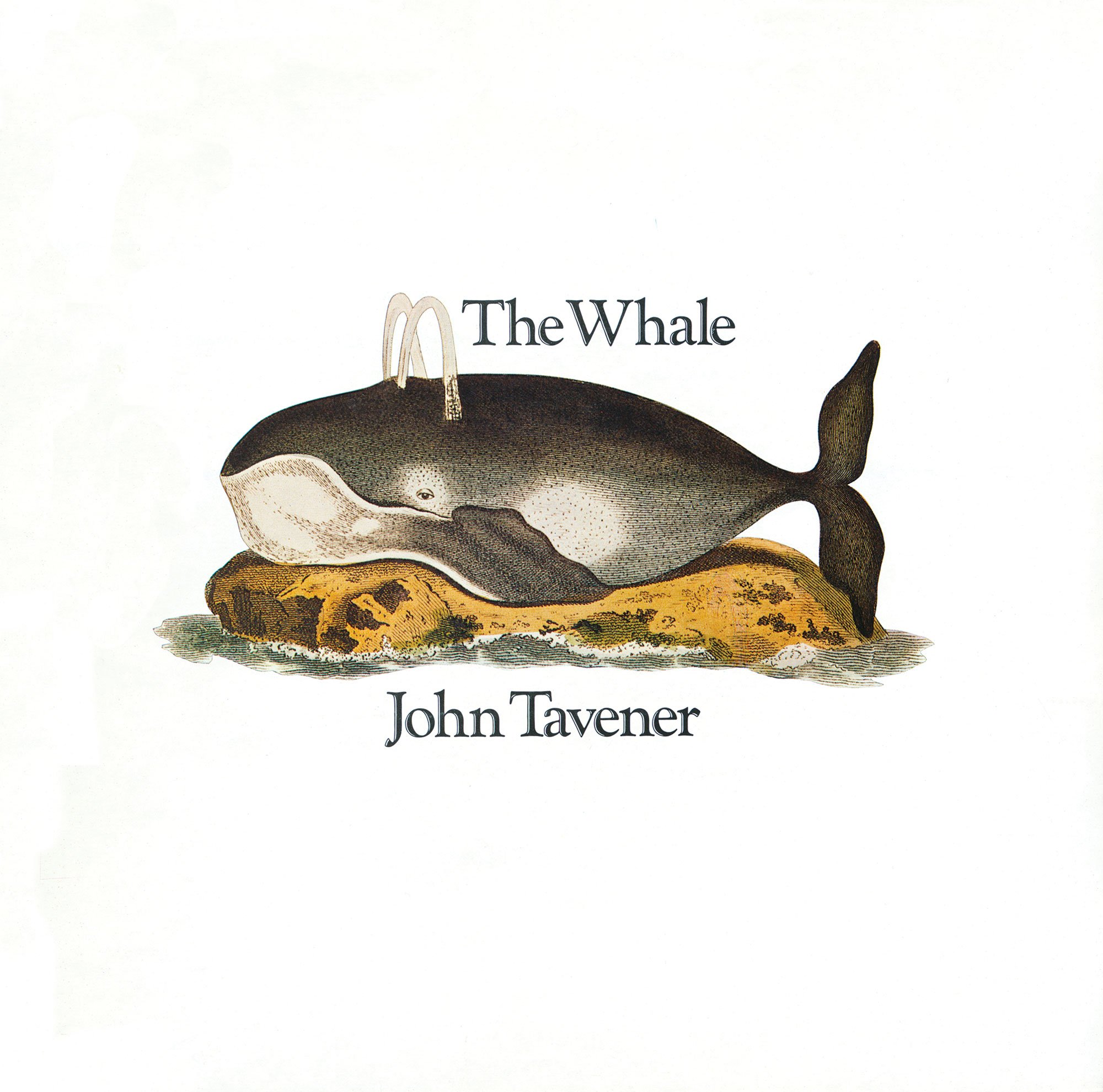
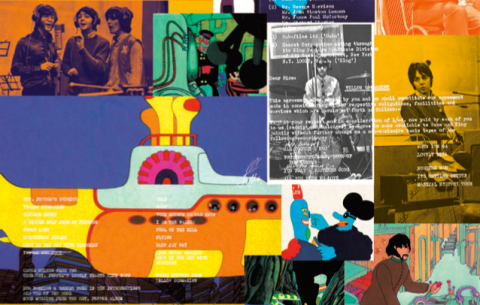
YELLOW SUBMARINE
KING FEATURES
"Yellow Submarine came out in July. I remember meeting Heinz Edelmann and the main artists involved; they sketched some ideas and we talked about the characters in the cartoon. But we only had one or two meetings, maximum, with them and the producer, Al Brodax – basically there was very little involvement from us." George
"I loved Yellow Submarine. I thought it was really innovative, with great animation. The Sea of Holes, the Blue Meanie syndrome – it’s still great and I’m glad we were involved with it." Ringo
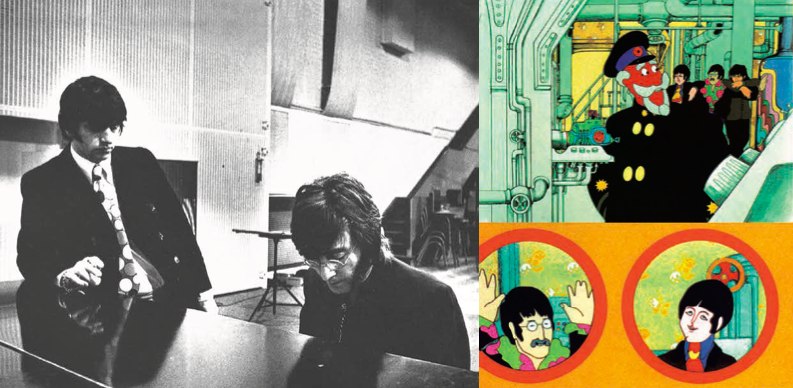

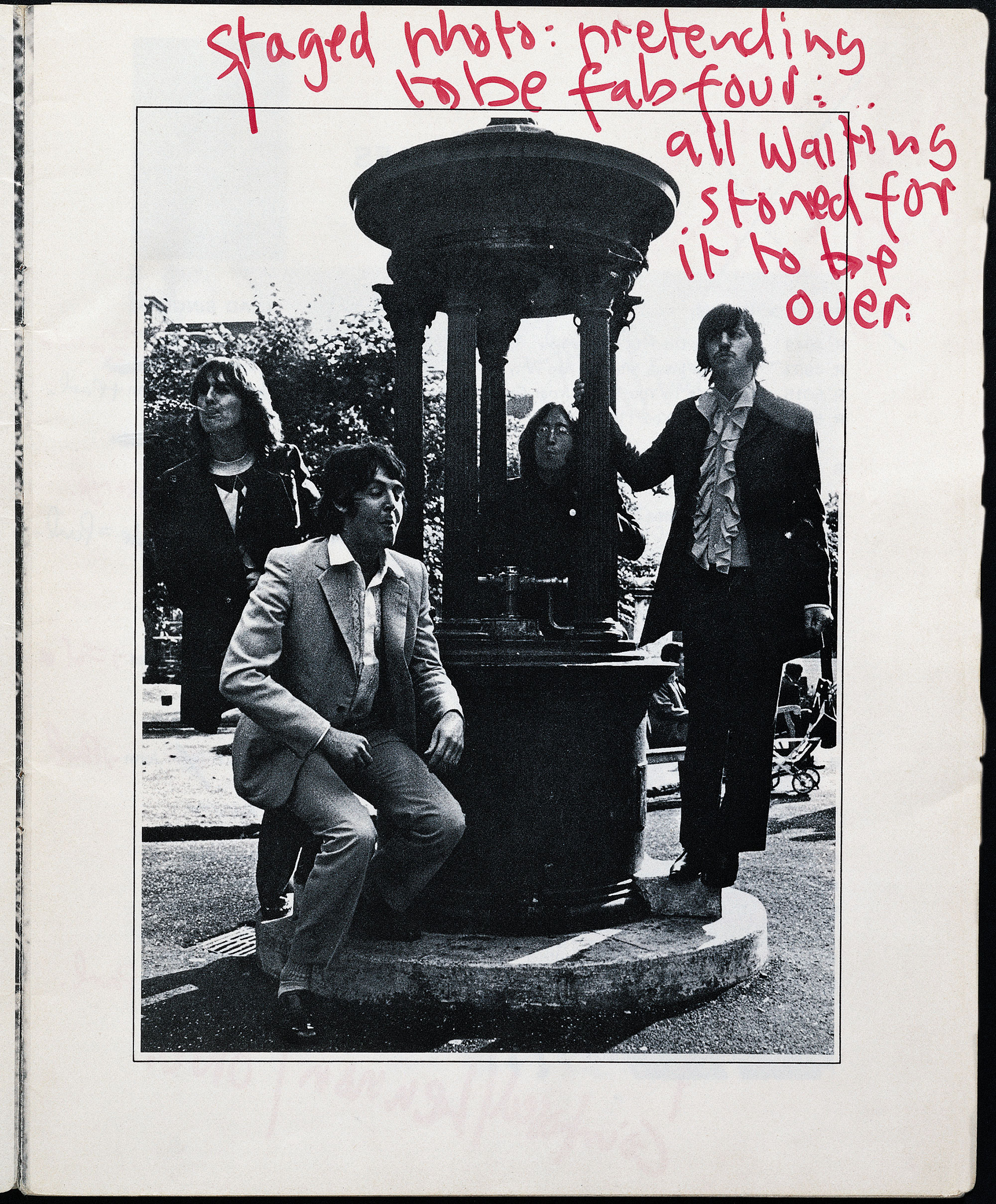
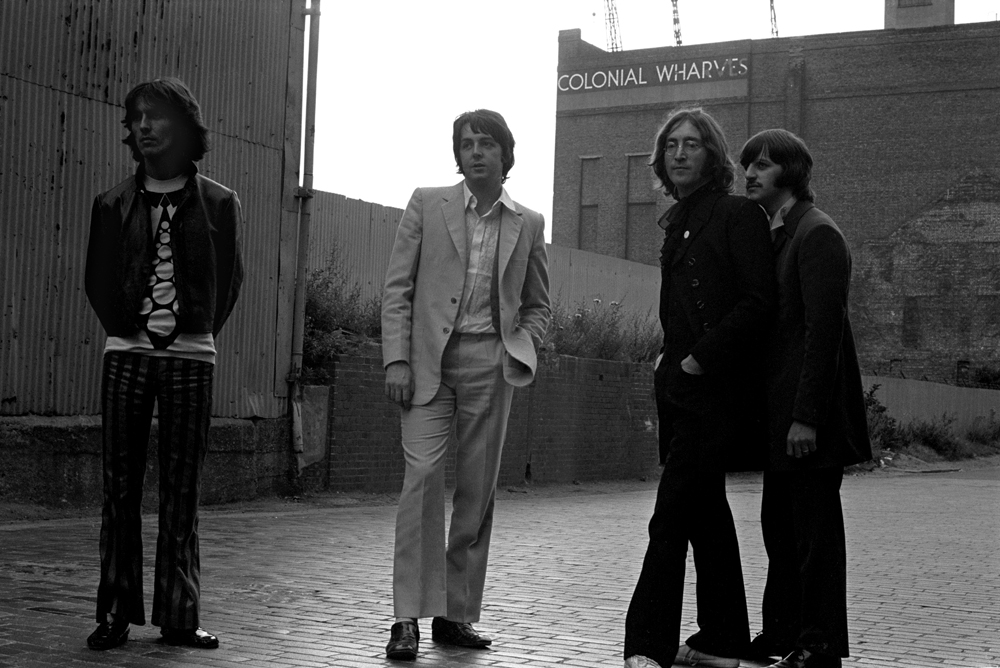
Helter Skelter*
( John Lennon, Paul McCartney )
Recorded EMI Studios, London, 18 July 1968
Producer George Martin
Engineer Ken Scott
A couple of months before recording the White Album version of Helter Skelter, The Beatles taped three extended performances of this new Paul McCartney number, which – because of their length and unreleased status – have assumed legendary standing. Take 2, which runs in excess of 12 minutes, has been respectfully pruned to under five here, preserving the essential elements of what was, fundamentally, an impromptu jam. Following balance engineer Ken Scott’s “Take 2” announcement the band immediately begins the slow, insistent groove on top of which Paul adds his compelling vocal; the mix is mono to compensate for the track configuration on the original tape: all theinstruments appeared on one track, the vocal was isolated on a second and the two remaining tracks were vacant.
What remains, audible to the fore, is a combination of tamboura, tabla, dilruba and swaramandal tracks recorded in March, with violins, cellos and George’s sitar track overdubbed on 3 April.
"We came into shops by the tradesman’s entrance, but we’re leaving by the front door. Apple is mainly concerned with fun, not frocks." Paul
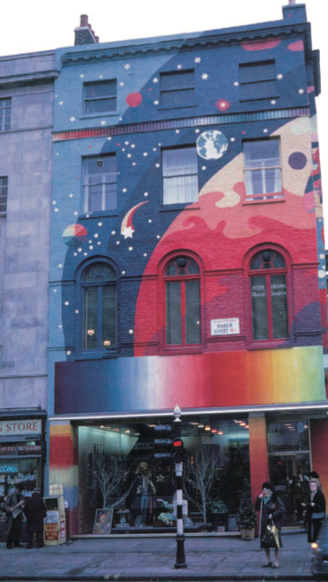
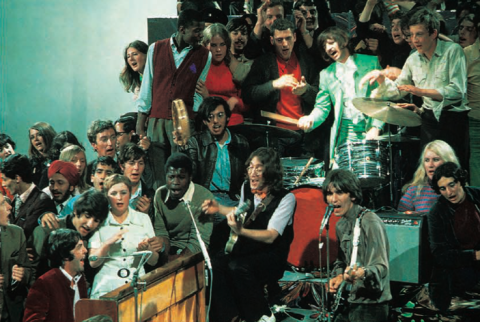
HEY JUDE
"‘Hey Jude’ is one of (Paul's) masterpieces. He said it was written about Julian, my child. He knew I was splitting with Cyn and leaving Julian. He was driving over to say ‘hi’ to Julian. He’d been like an uncle to him. Paul was always good with kids. And so he came up with ‘Hey Jude’." John
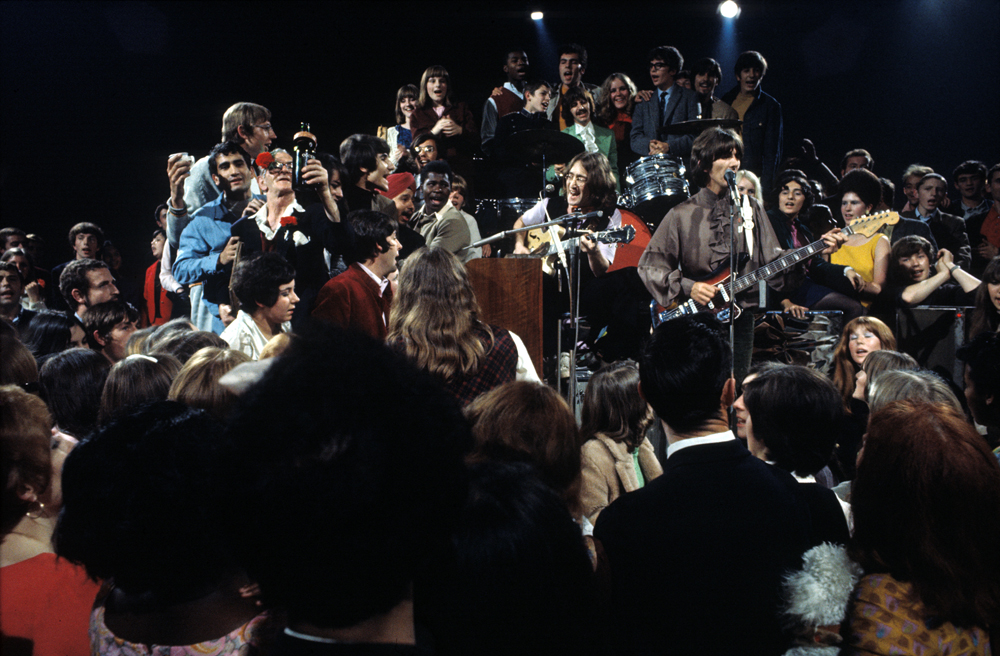
Hey Jude
( John Lennon, Paul McCartney )
Recorded EMI Studios, London, 29 July 1968
Engineer Ken Scott
While the master version – issued as a single at the end of August 1968 – was long and lavish, this studio run-through of Hey Jude, taped four days earlier, is comparatively abbreviated and purposely stripped-down: live piano and vocal from Paul, live drums, acoustic and electric guitars. The take begins in a jestful manner: John speaks of “the heart of the Black Country”, the name of the old smoke-stack industrial region in the middle of England, and Paul responds with a mention of Boston Place, a small London street where The Beatles’ company Apple had just installed an electronics laboratory. (Also, The Beatles had been filmed running along Boston Place for the title sequence of A Hard Day’s Night.)
THE BEATLES (WHITE ALBUM)
"Sgt Pepper did its thing – it was the album of the decade, of the century maybe. It was very innovative with great songs, it was a real pleasure and I’m glad I was on it, but the ‘White’ album ended up a better album for me." Ringo
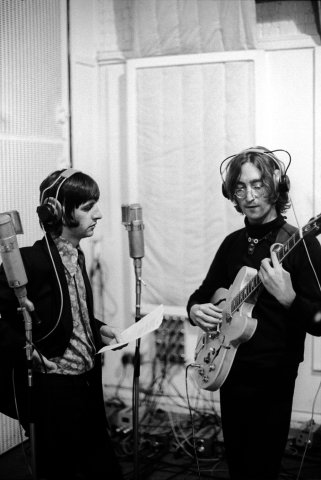
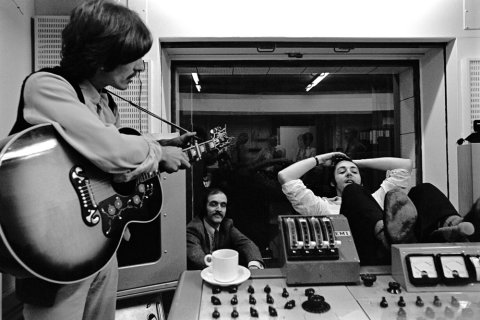
"All the stuff on the ‘White’ album was written in India when we were supposedly giving our money to Maharishi, which we never did. We got our mantra, we sat in the mountains eating lousy vegetarian food and writing all those songs." John
1969
LET IT BE
TWICKENHAM FILM STUDIOS
"We started Let It Be in January 1969 at Twickenham Studios, under the working title Get Back. Michael Lindsay-Hogg was the director. The idea was that you’d see The Beatles rehearsing, jamming, getting their act together and then finally performing somewhere in a big end-of-show concert. We would show how the whole process worked." Paul
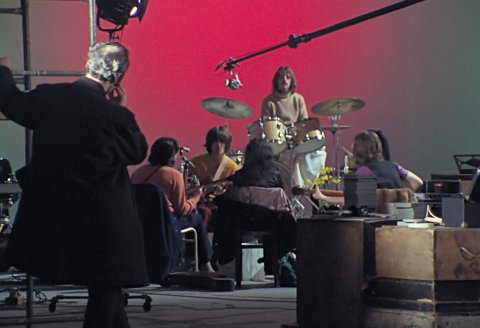
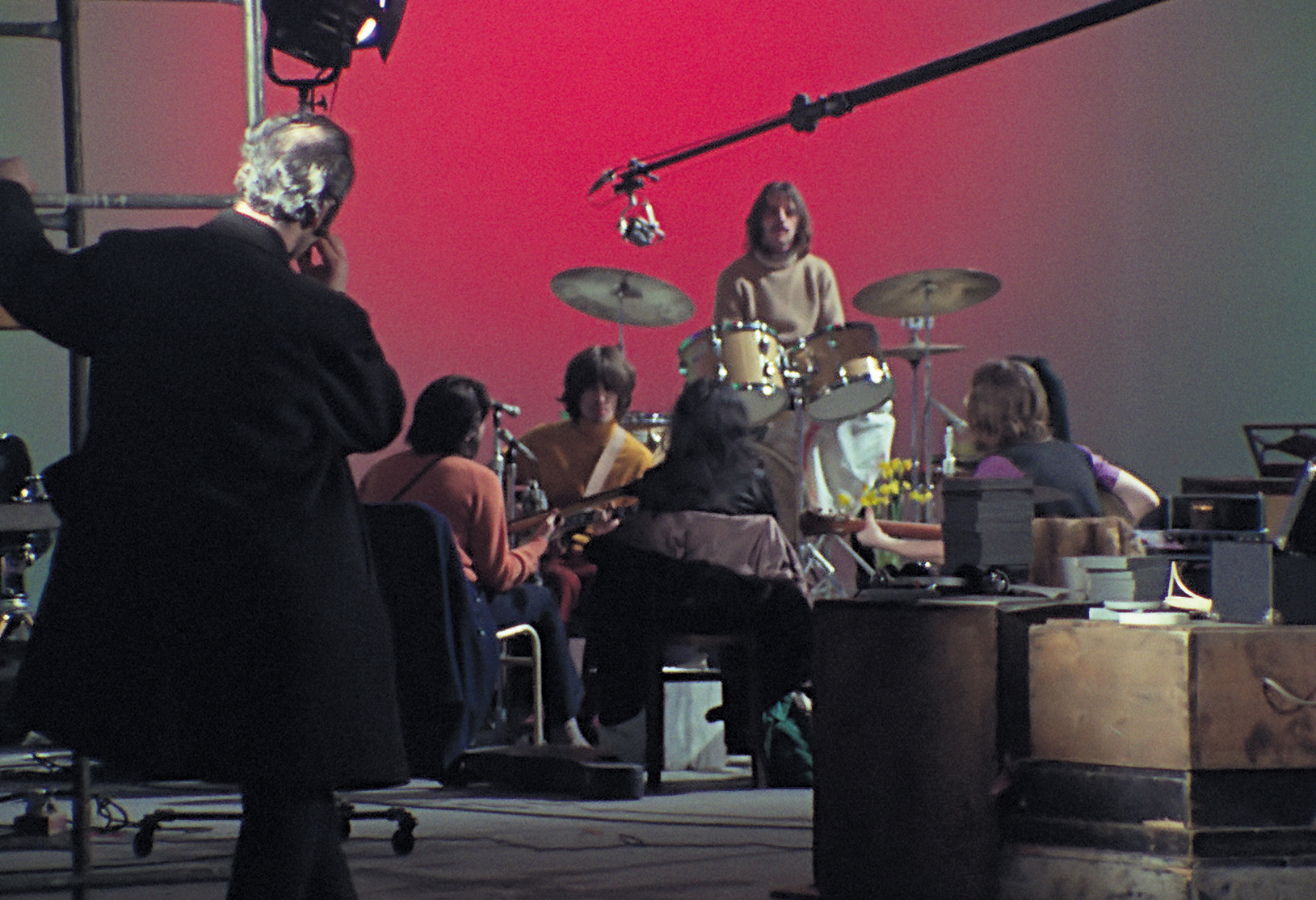
I’ve Got A Feeling
( John Lennon, Paul McCartney )
Recorded Apple Studios, London, 23 January 1969
Producer George Martin
Engineer Glyn Johns
This is the first of twelve Anthology selections from recording sessions that took place in the new basement studio at The Beatles’ own office building (3 Savile Row, in Mayfair, central London), all previously unreleased in this form. The sessions were also filmed – indeed, the project had started out as a filmed account of The Beatles rehearsing for their first concert appearance in nearly three years. As it happened, though, part-way through production, the stage return was shelved and, instead, the cameras set about filming The Beatles as they recorded songs for their next album. At one point, like the accompanying film, the album was to be titled Get Back; both eventually, some 16 months later, appeared as Let It Be, after the release of Abbey Road.
Having trailblazed highly creative, intricate use of multi-track tape recording in preceding years, The Beatles were as determined as ever to be different with this latest work, their intention being to return to the live-in-the-studio set-up that harked back to their earliest days with EMI. In denying themselves the opportunity to overdub they were boosted by the addition to their famous four-man line-up of a fifth musician, the keyboard player Billy Preston. The American joined The Beatles – strictly on a temporary basis – during the first day of recording at Savile Row, 22 January, the group having spent the first two weeks of the month rehearsing for the cameras at Twickenham Film Studios, south-west of London. (Although filmed, those sessions were not recorded by EMI.)
Preston’s electric piano work is evident on this recording of the new Lennon- McCartney collaboration I’ve Got A Feeling, which was a good, tight performance until it broke down near to the end – for which John instantly accepted responsibility.

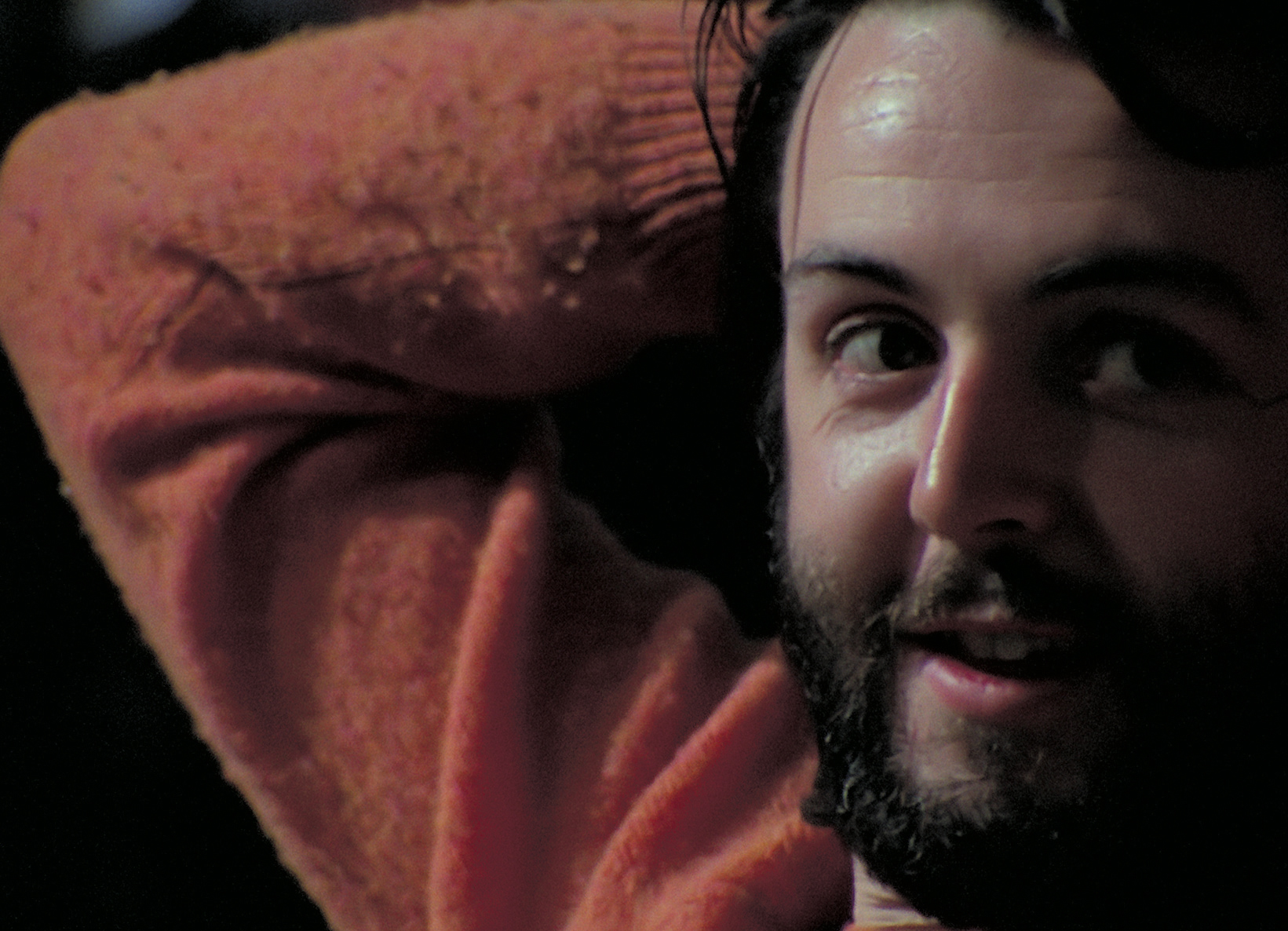
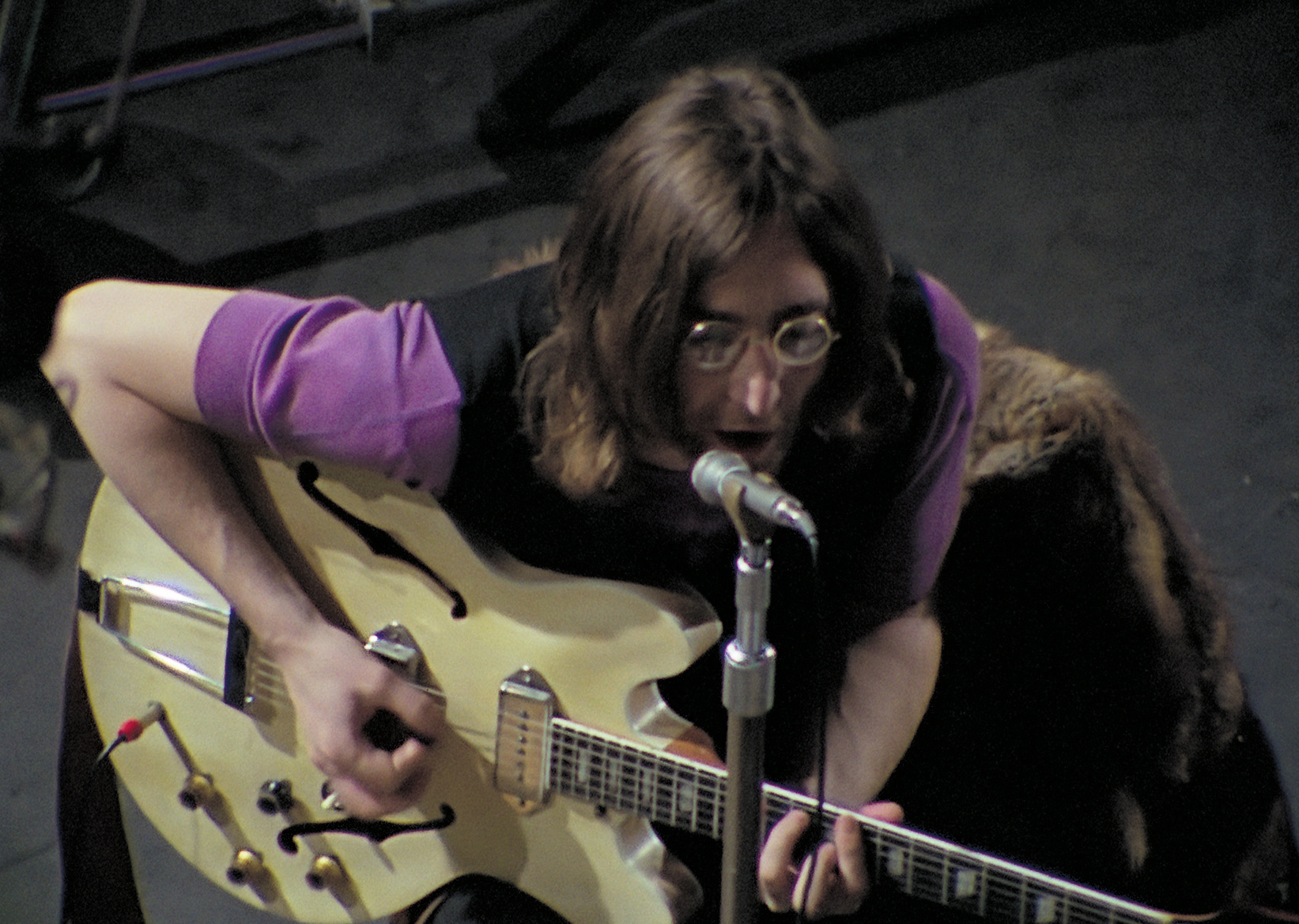
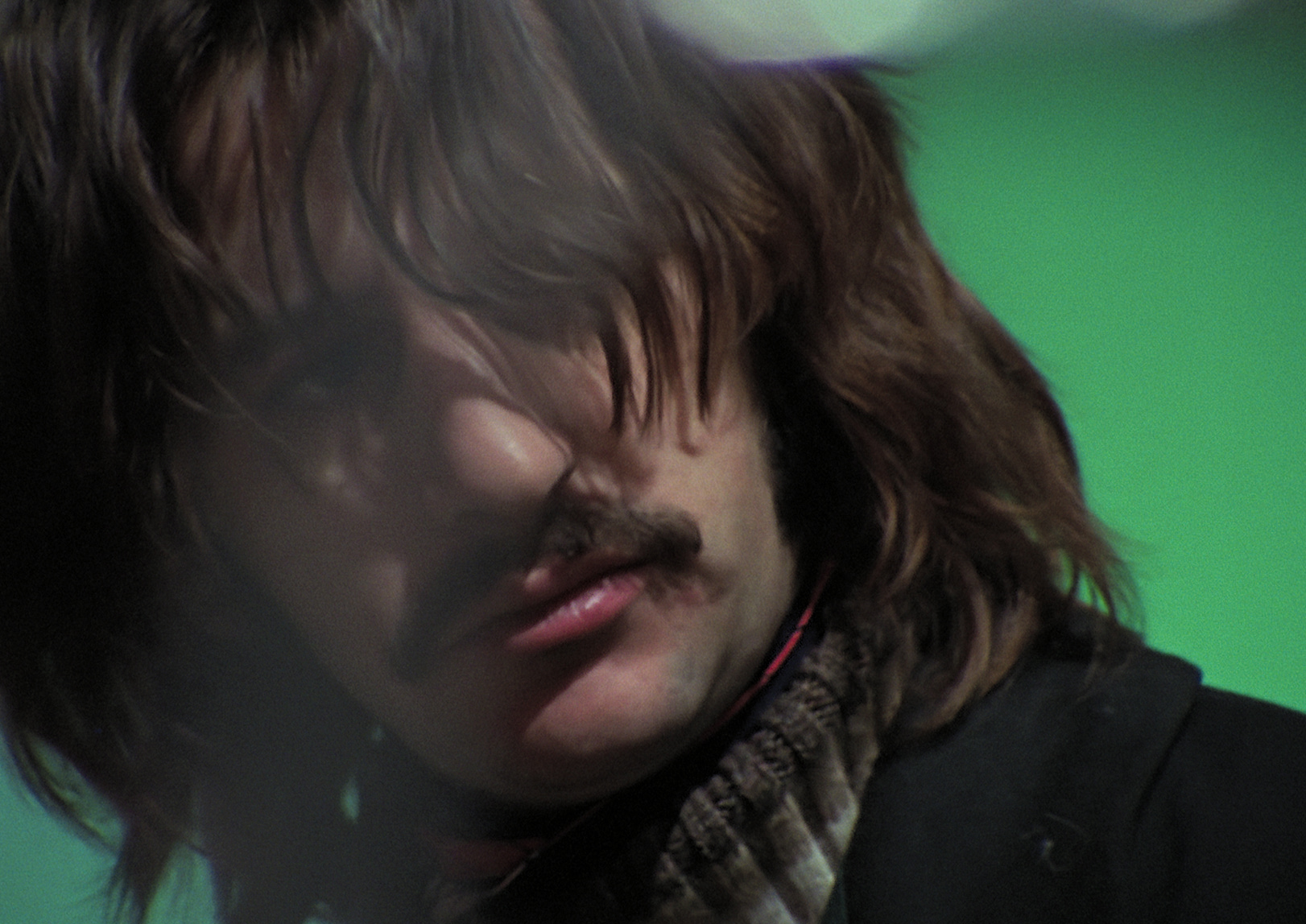
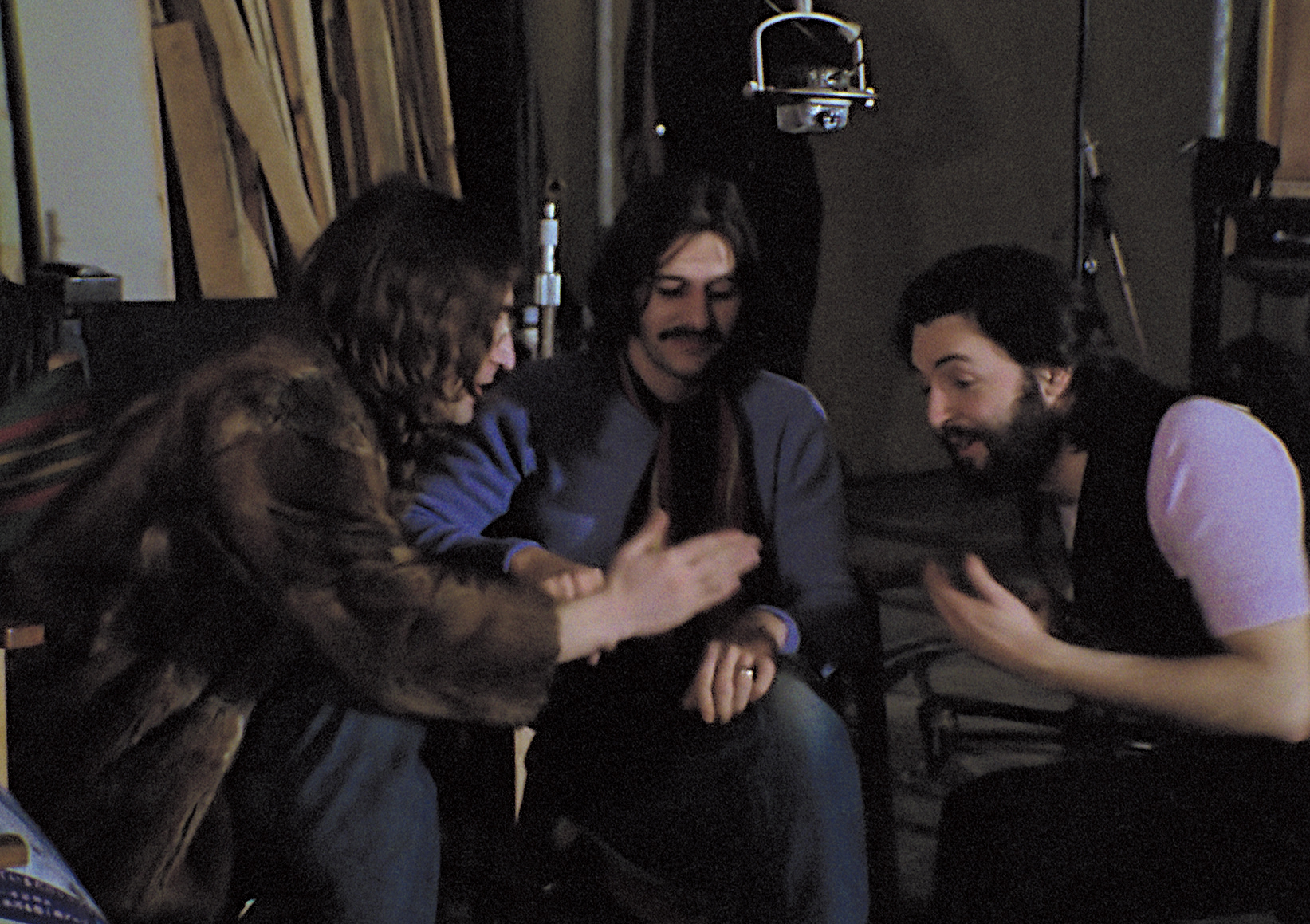
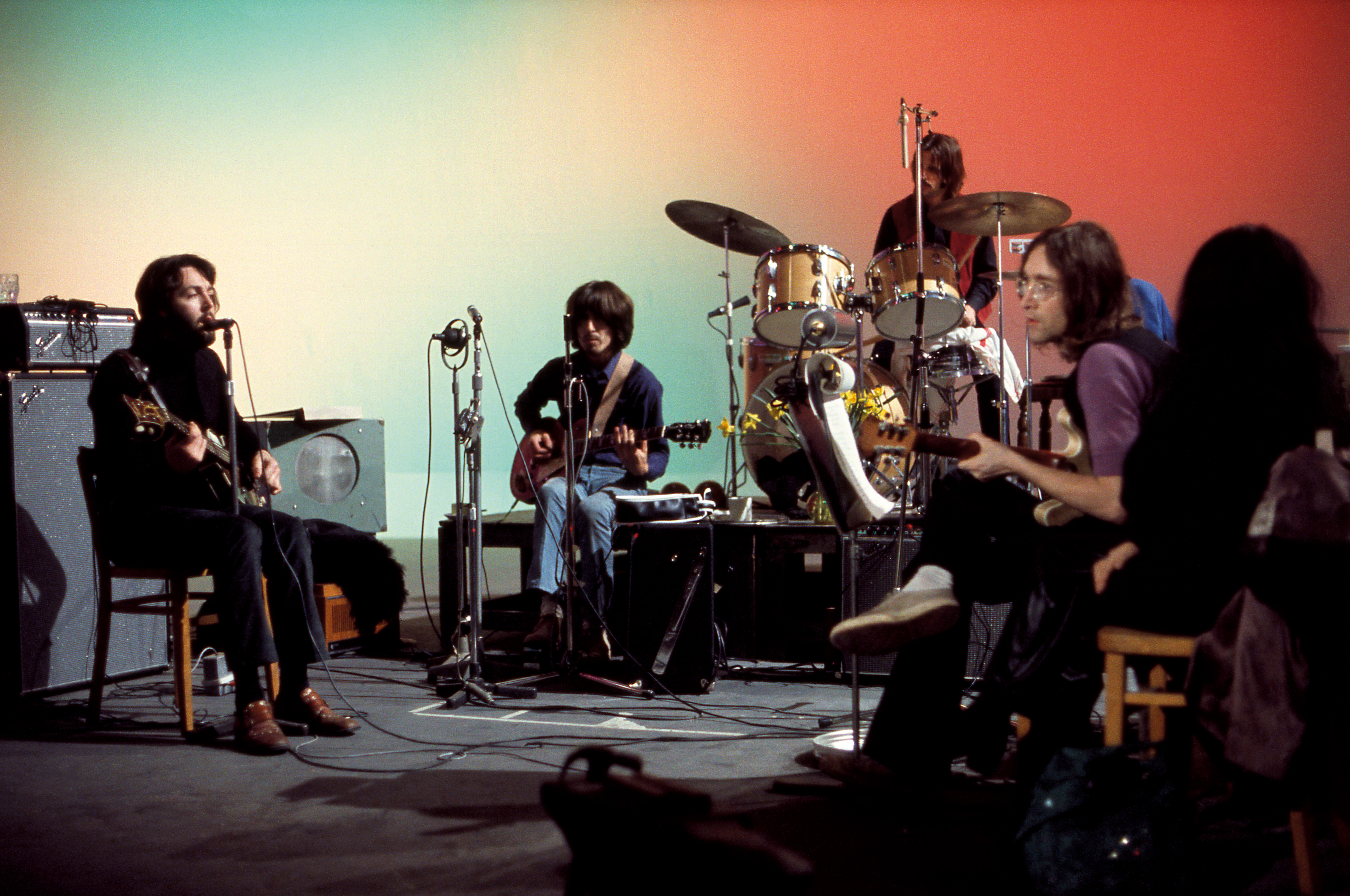

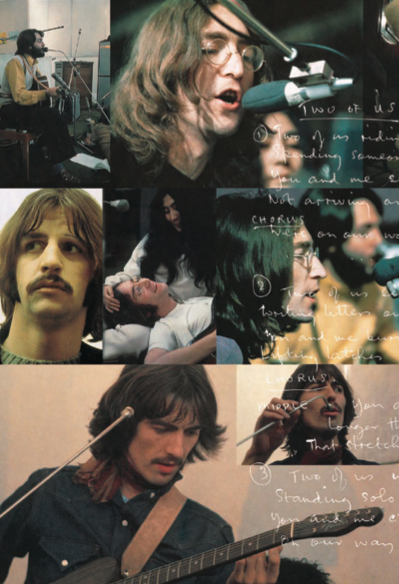
"On the Let It Be project we were originally going to rehearse all the new songs and then make an album in a live show. That never really happened because the album became us in the studio. As we rehearsed the songs, they were recorded, and the film of us recording them was really a film of us rehearsing." George
"I don’t think Billy Preston made us behave a bit better. I think we were working on a good track and that always excited us. His work was also a part of it, so suddenly – as always when you’re working on something good––the bullshit went out of the window and we got back down to doing what we did really well." Ringo
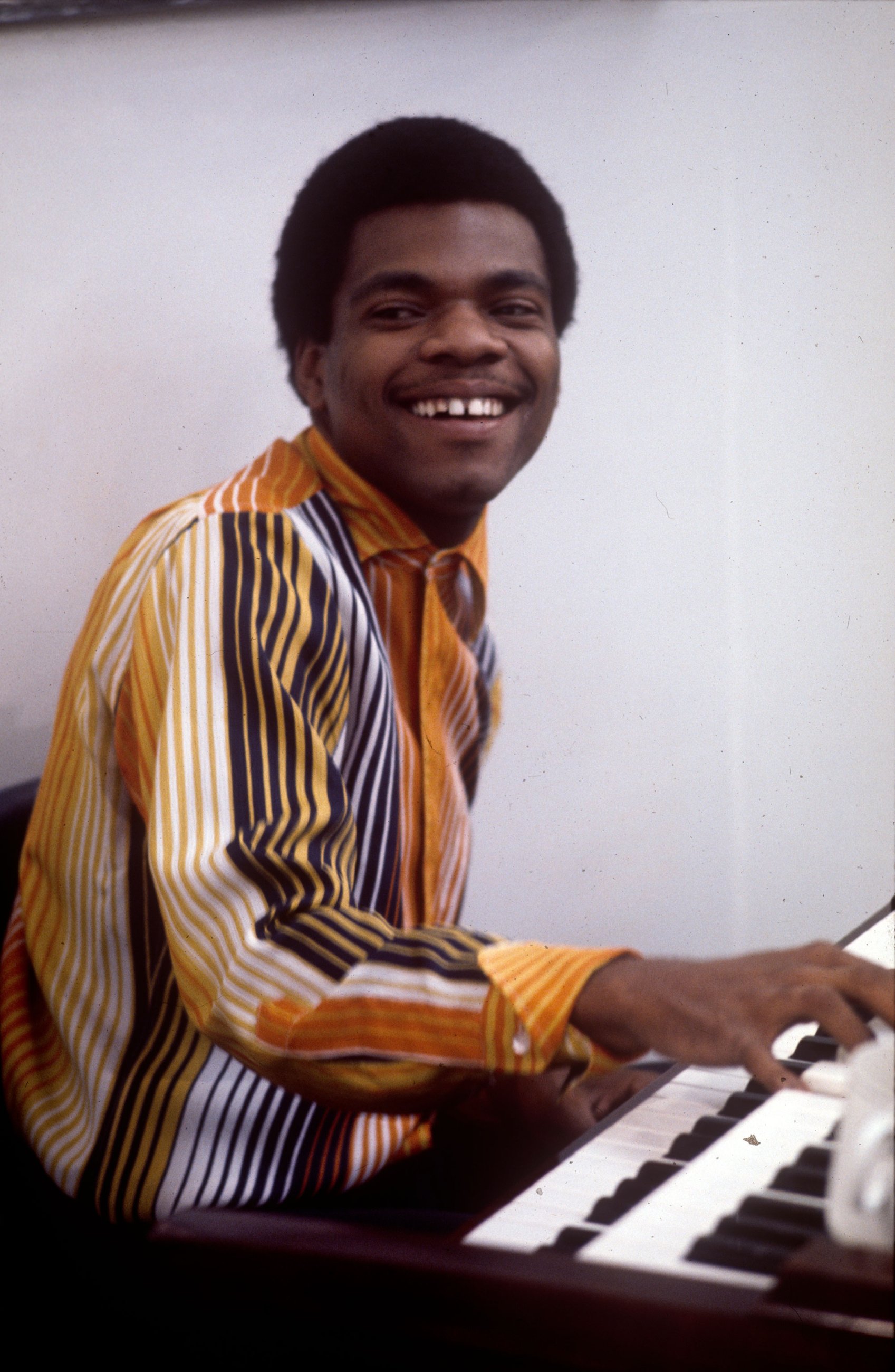
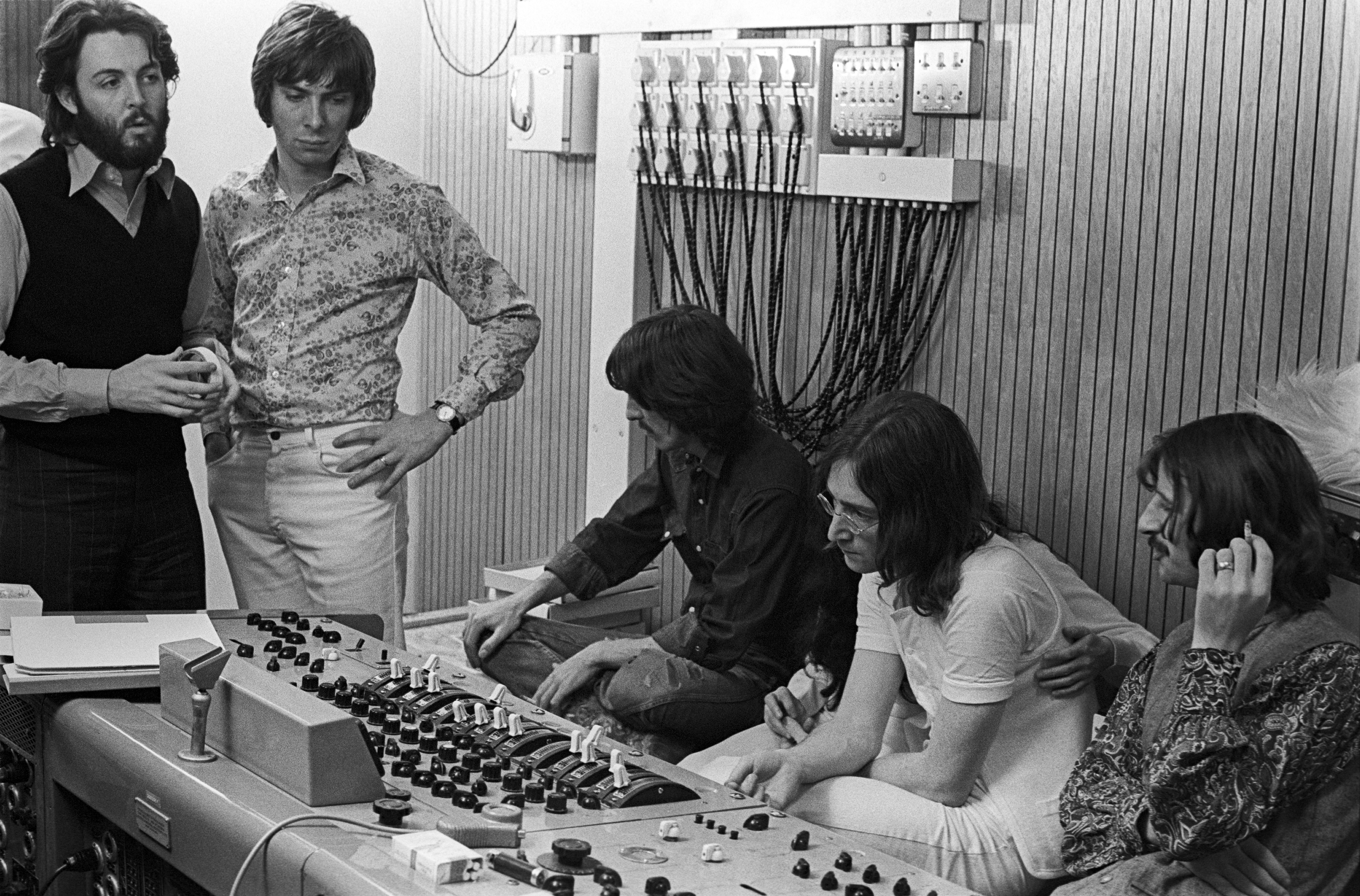

THE ROOFTOP GIG
"We’ve finished it and the most finished number on it was ‘Get Back’. We were doing this rehearsal for a show which we never finished, so we got fed up and put the rehearsal out." John

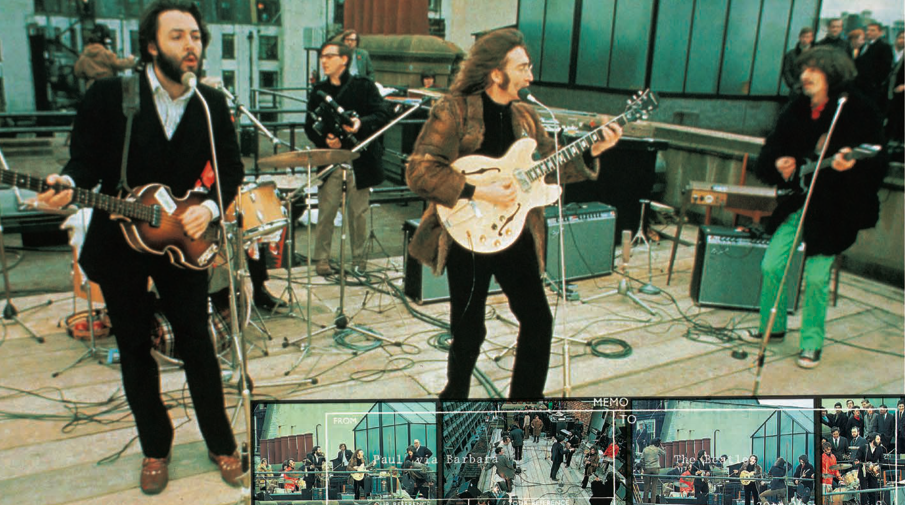
Get Back
( John Lennon, Paul McCartney )
Recorded Apple (roof), London, 30 January 1969
Producer George Martin
Engineer Glyn Johns
On Thursday 30 January 1969, the penultimate day of sessions for their film/album project, The Beatles treated a surprised central London lunchtime gathering to a memorable live performance on the roof of the Apple headquarters in Savile Row. The group could scarcely be seen, on the high top of their building, but they could most certainly be heard, the decibels reverberating around the Piccadilly and Mayfair areas, attracting such a large crowd that it was only a matter of time before complainants, citing disruption to the local business community, stirred up police interest.
Some forty minutes into the impromptu show, uniformed constables from West End Central station, located just along Savile Row, entered the Apple building and made their way to the roof. Knowing that they were about to be stopped, The Beatles bargained for one more number, Get Back, the song that would be the group’s next single and lend its name to the film/album project as a whole. (Until being displaced by Let It Be, that is.)
Owing to the distracting presence of the police, which prompted some ad-libbing by Paul at the end, there was little chance of this number (the third rooftop performance of Get Back) being too accomplished; indeed, it was further hampered by the early silencing of John and George’s amplifiers – a matter quickly rectified by the guitarists – so for a while only Paul’s bass, Ringo’s drums and Billy Preston’s keyboard are audible. All the same, this is an historic moment: The Beatles are singing the last song in their last live performance.
"The album Get Back (or Let It Be, as it became) was not released until May 1970 and became probably the most bootlegged record of all time. It was laying dormant and so we decided, ‘Let’s make a good album again.’ We thought it was a good idea to get George Martin involved. We went back to Abbey Road and made the album." George
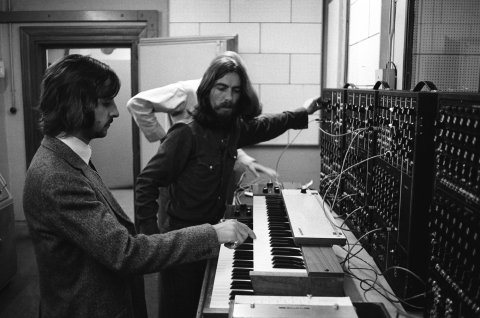
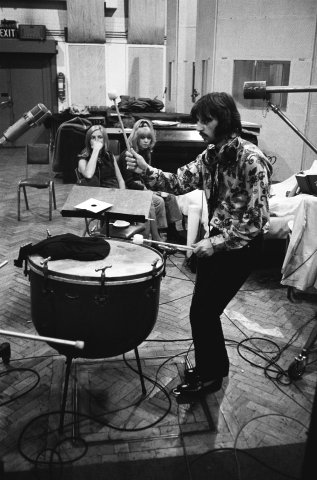
"I think it shows on the record when we were excited: the track’s exciting and it all comes together. It doesn’t matter what we go through as individuals on the bullshit level; when it gets to the music you can see that it’s really cool, and we had all put in one thousand per cent." Ringo
"The crossing was right outside, and we said, ‘Let’s just go out, get a photographer and walk out on the crossing. It’ll be done in half an hour.’ It was getting quite late and you always have to get the cover in ahead of the sound. So we got hold of the photographer Iain Macmillan, gave him half an hour and walked across the crossing." Paul
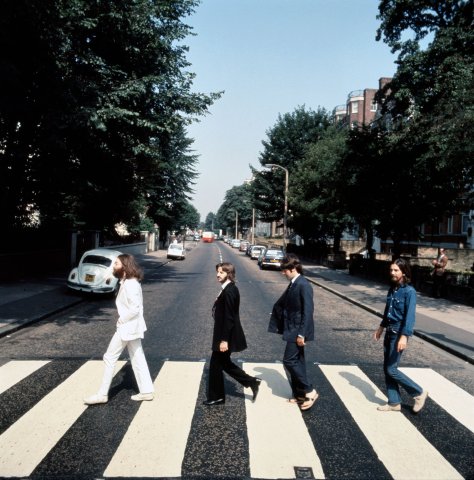
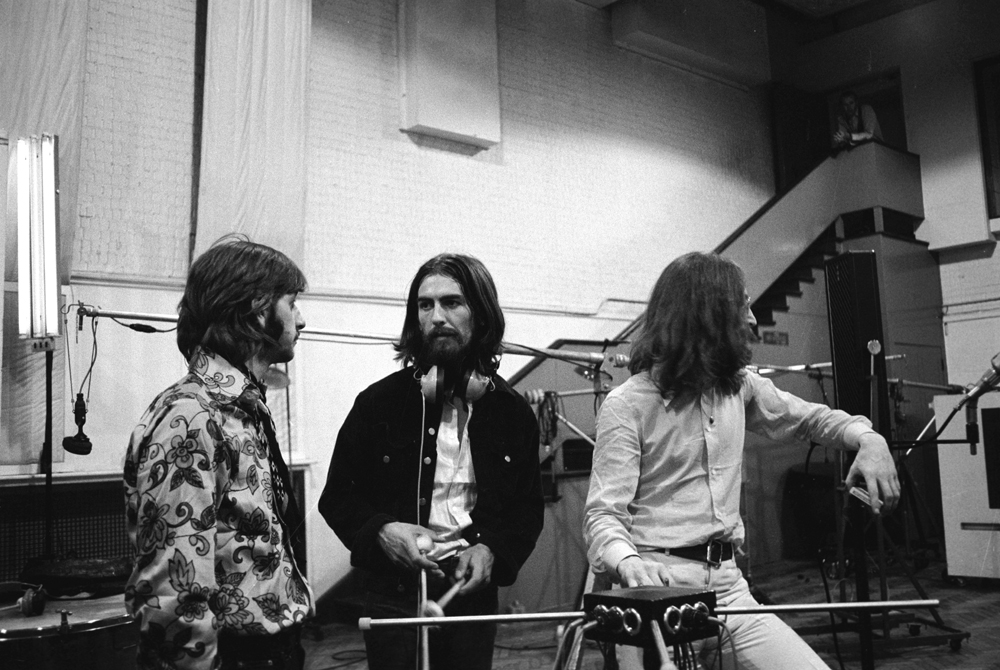
Something
( George Harrison )
Recorded EMI Studios, London, 25 February 1969
The final solo demo recorded by George Harrison on his 26th birthday resulted in the first commitment to tape of the beautiful Something, destined for the album Abbey Road (recording spanned April to August 1969), George’s first A-side composition for The Beatles when it was issued as a single that October, and hundreds of cover versions. The demo is simplicity itself: a live-in-one-take electric guitar/vocal performance that, in addition to the definitive lyric, also embraced a counter-melody verse later dropped. Shortly after taping this demo George participated in a session during which Joe Cocker became the first artist – ahead of The Beatles, even – to record this major new composition; his version did not come out until November 1969, however, by which time Abbey Road and the Something single had been issued.
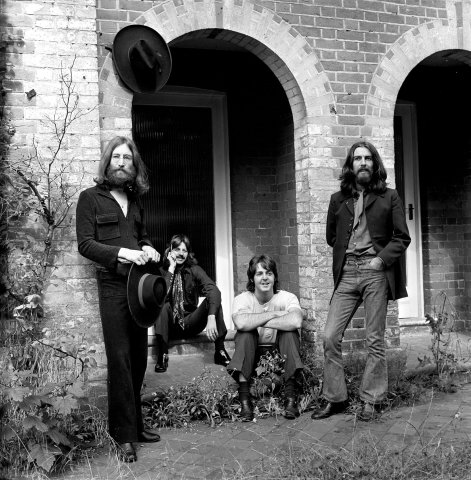
"On 22nd August, The Beatles all turned up at Tittenhurst Park, John’s new house in Ascot (which Ringo later bought from him), for what turned out to be their last set of photos taken together." Derek Taylor
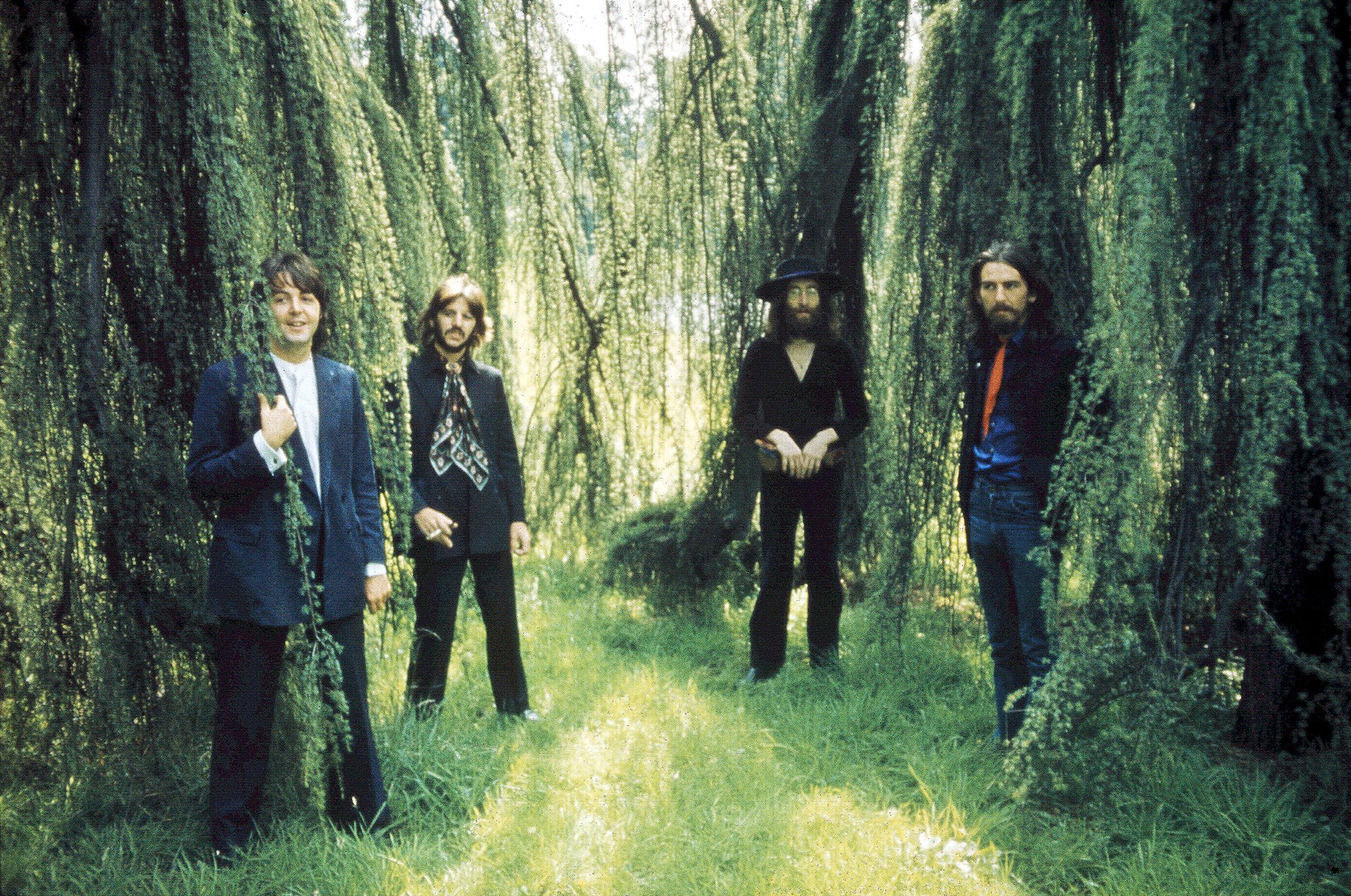

"They all have this wonderful dream of how it was, and it’ll never be like that because it never was like everybody thinks it was. It was wonderful and it’s over. And so dear friends you’ll just have to carry on... The Dream Is Over." John
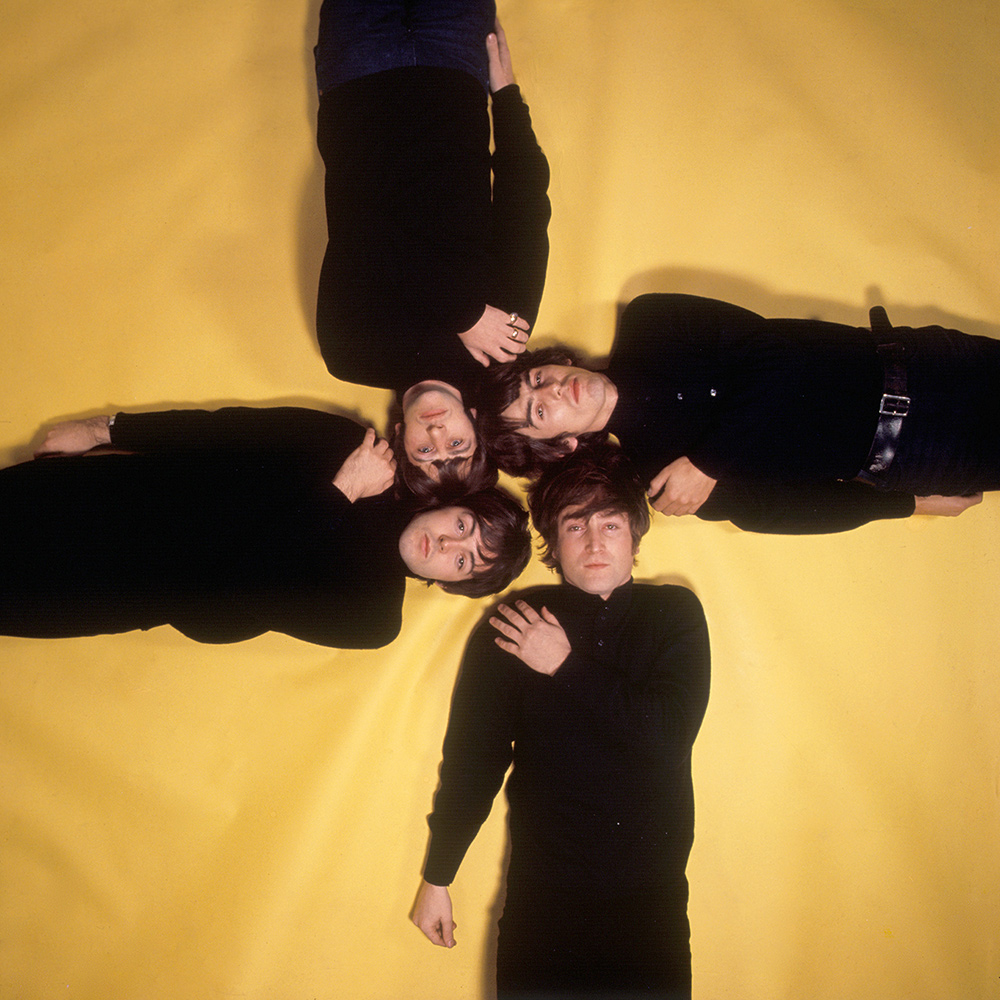
Share this website